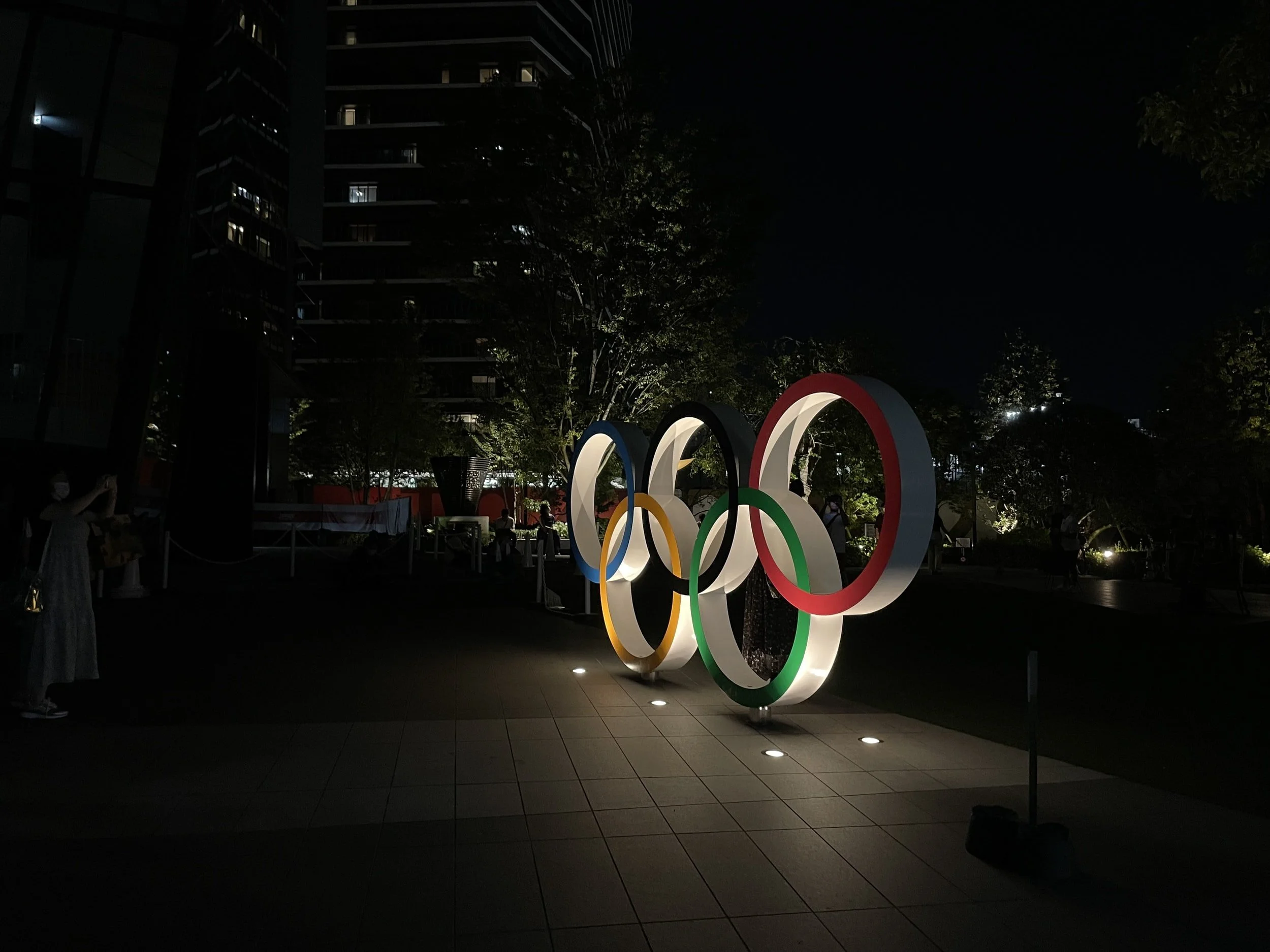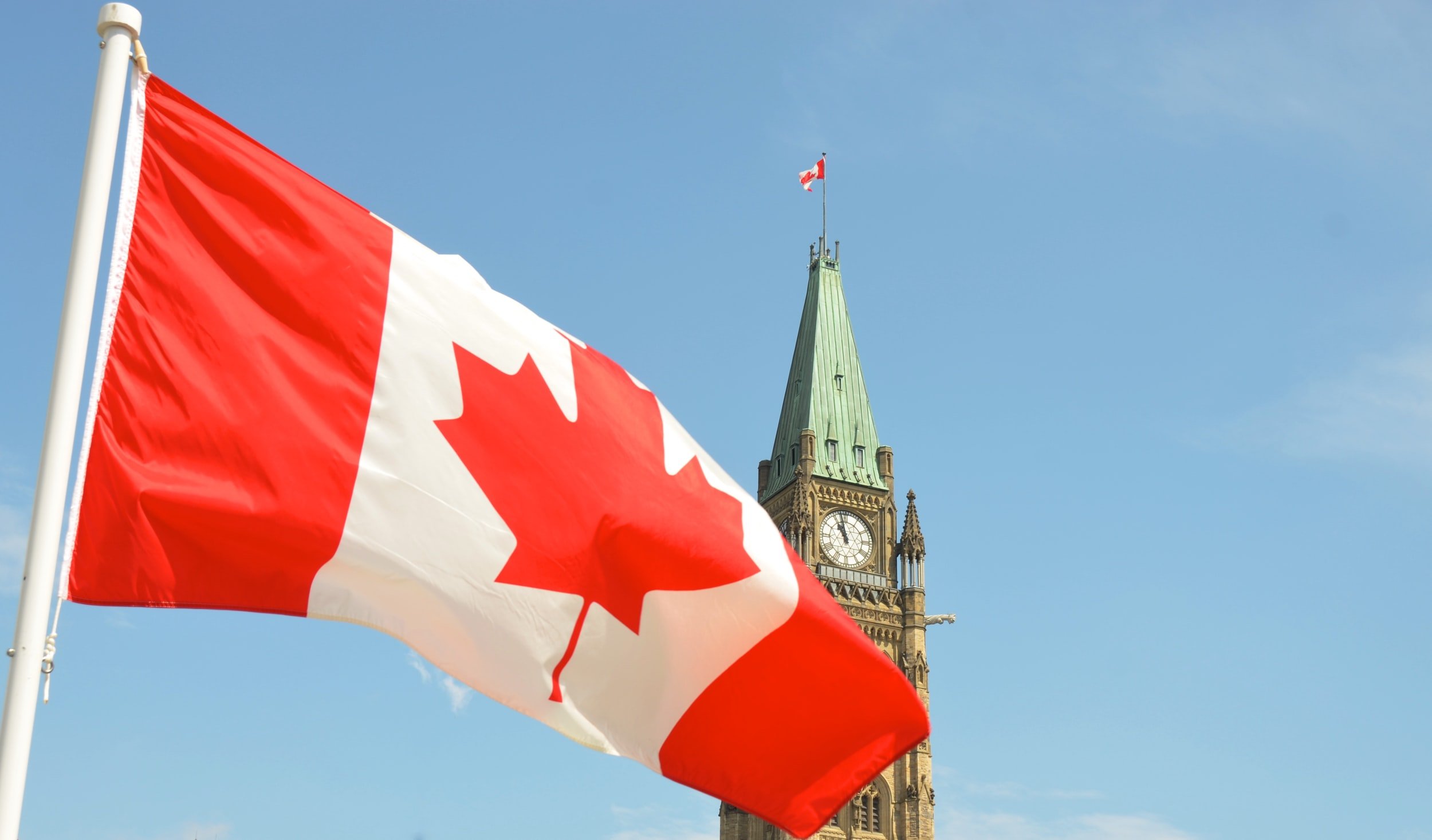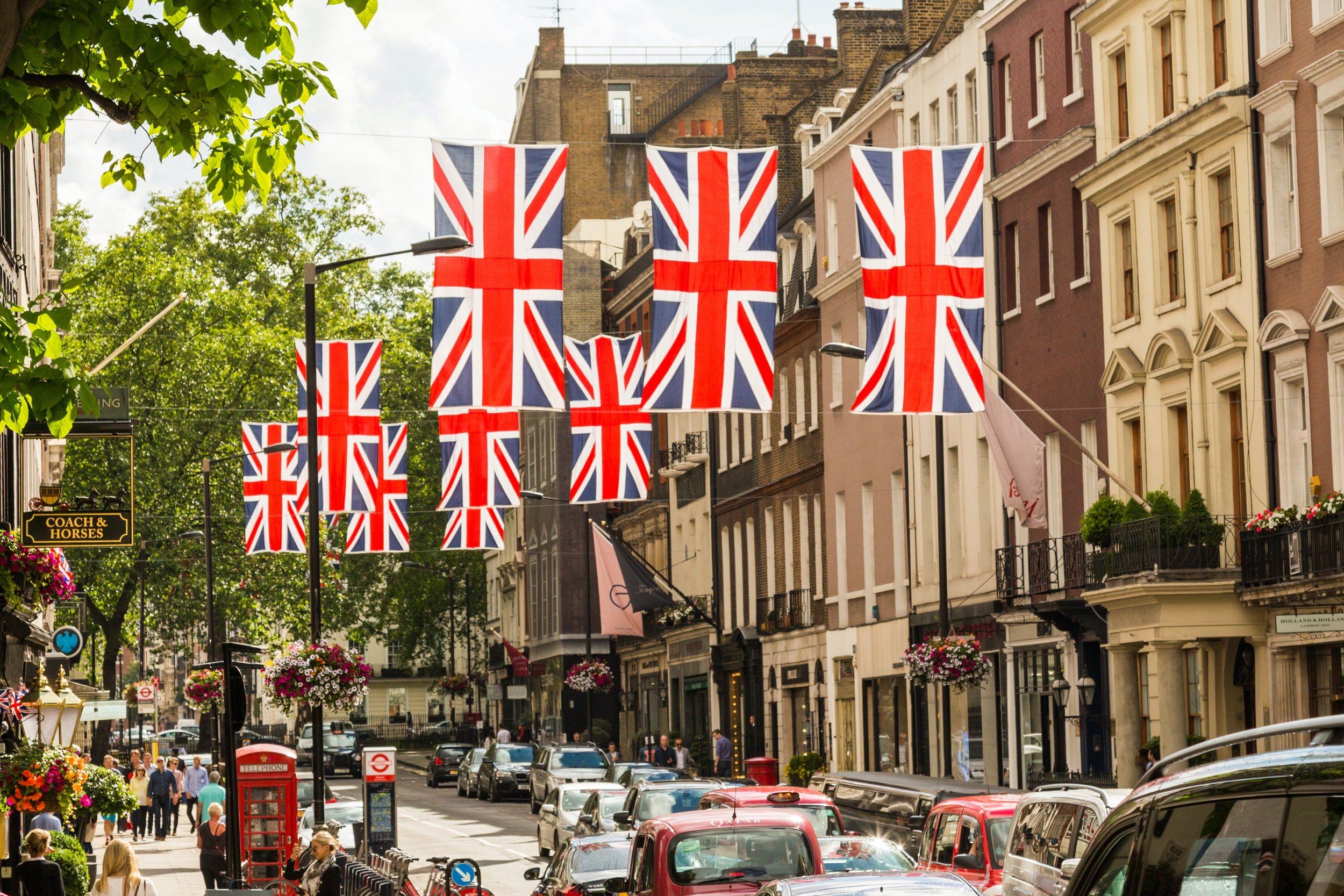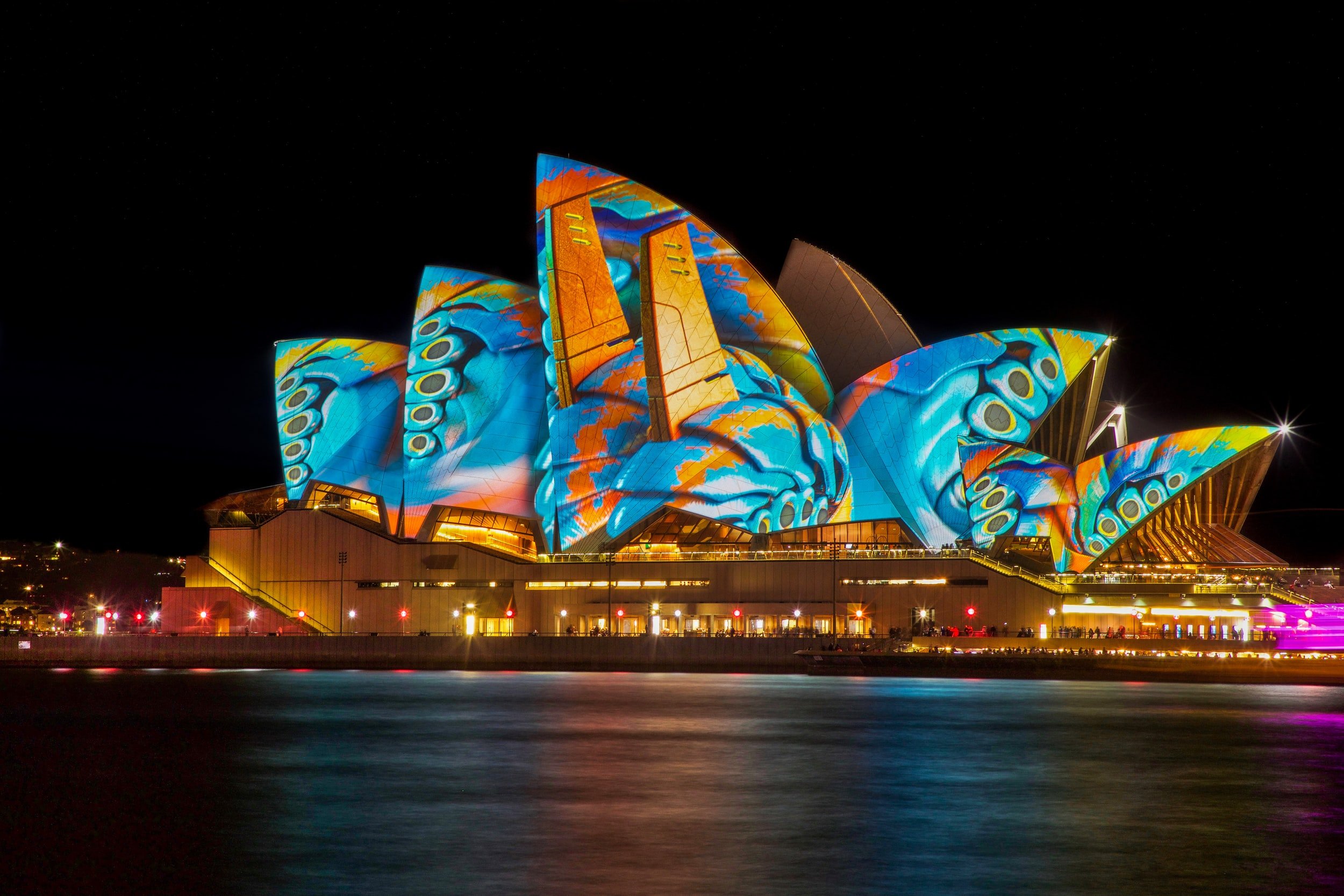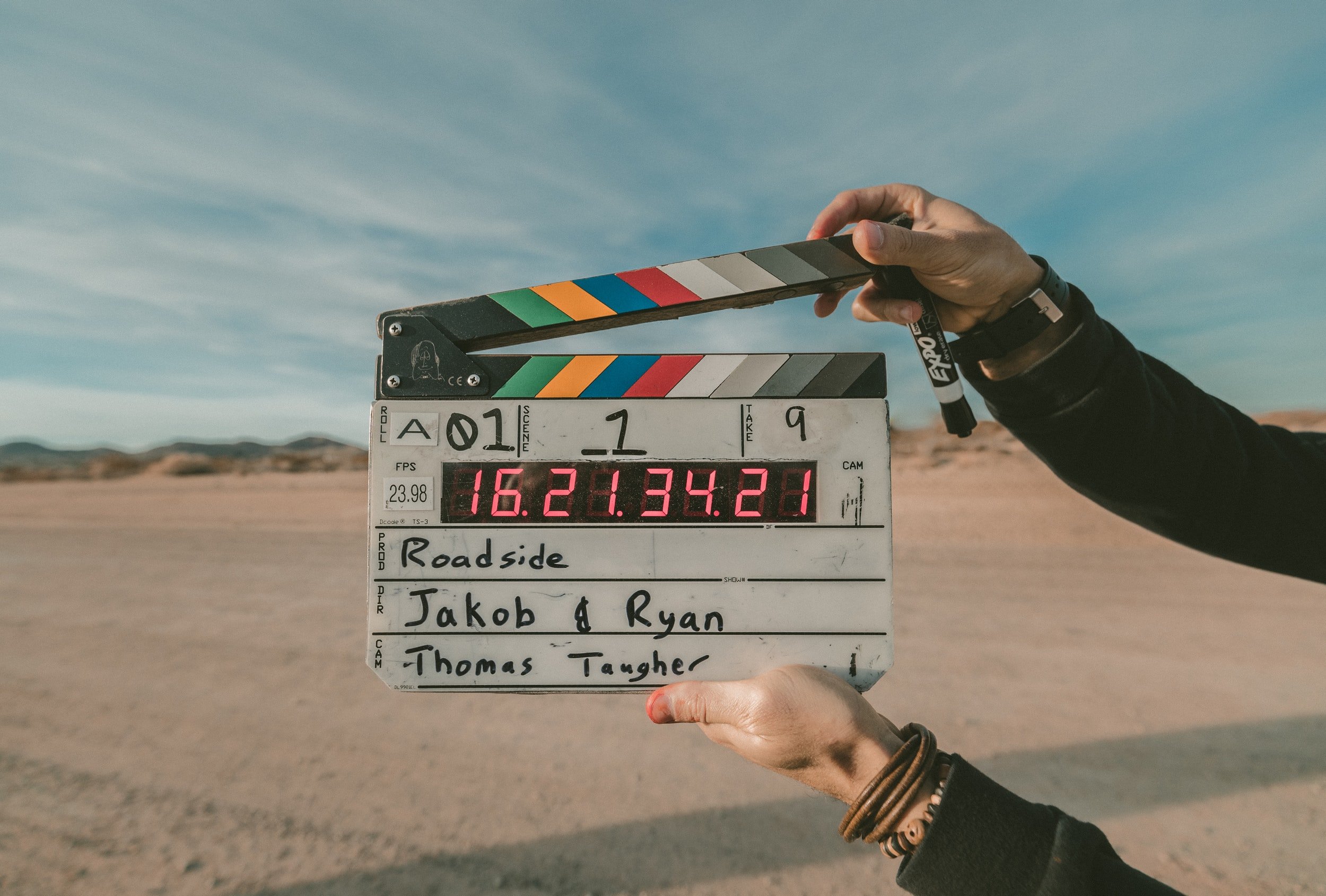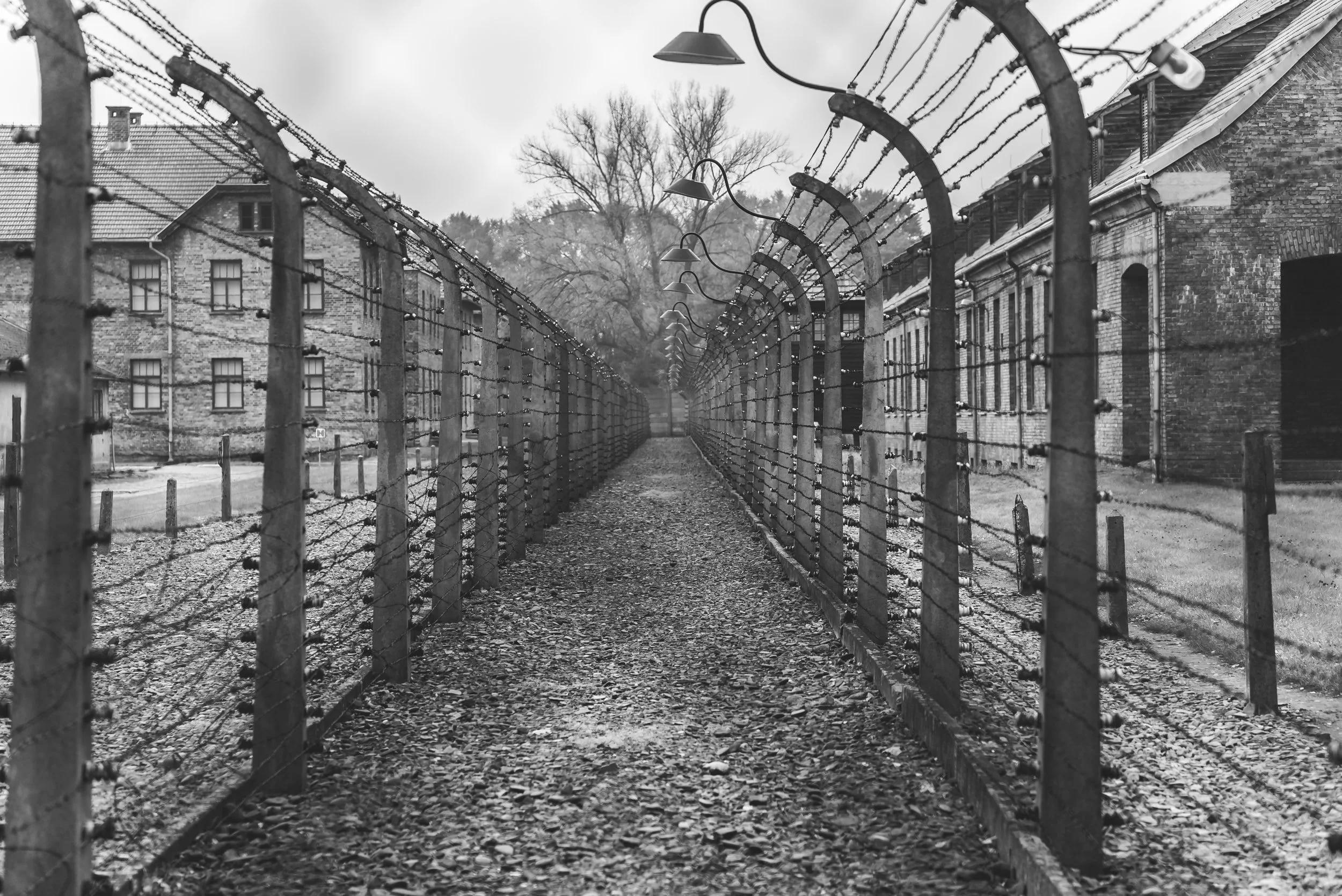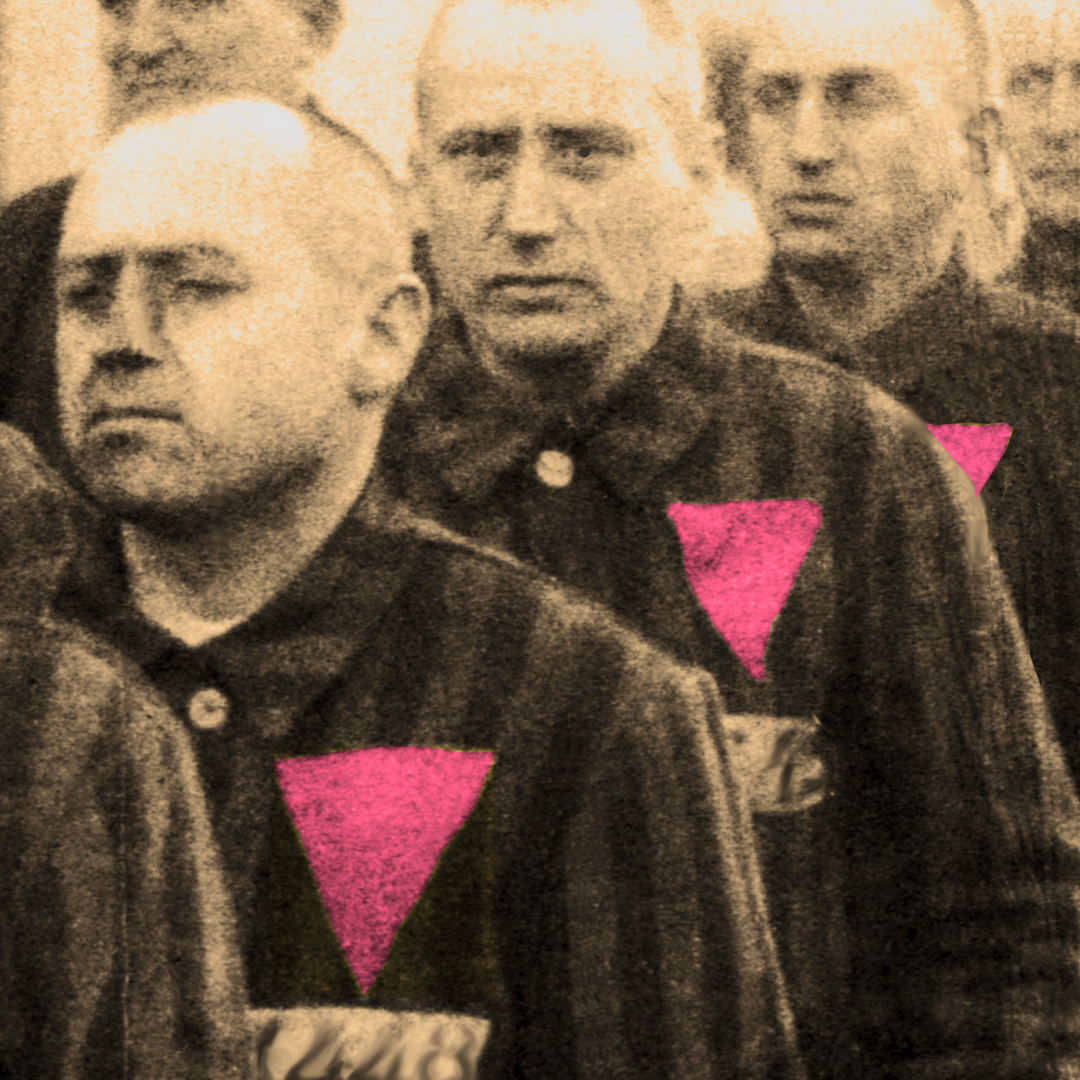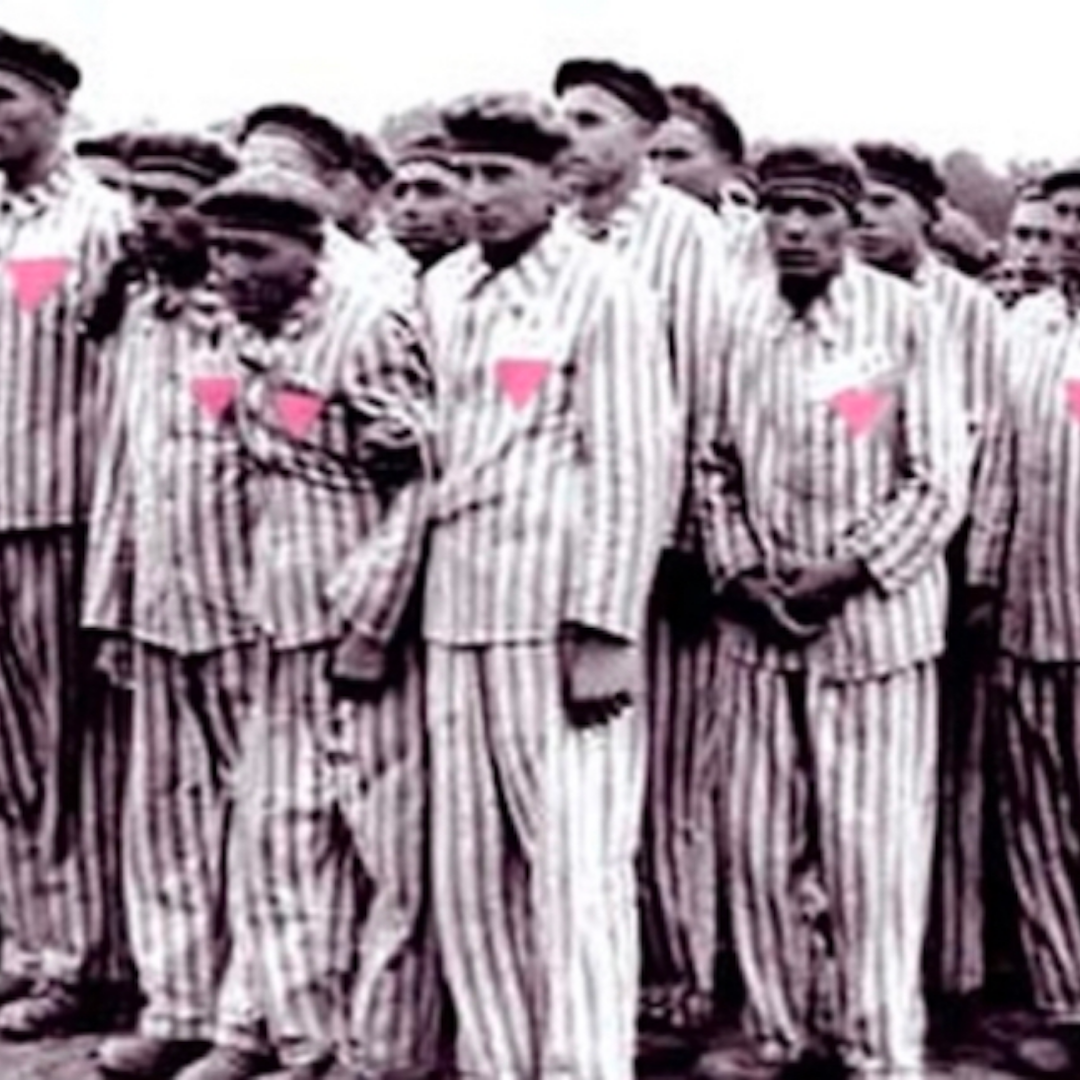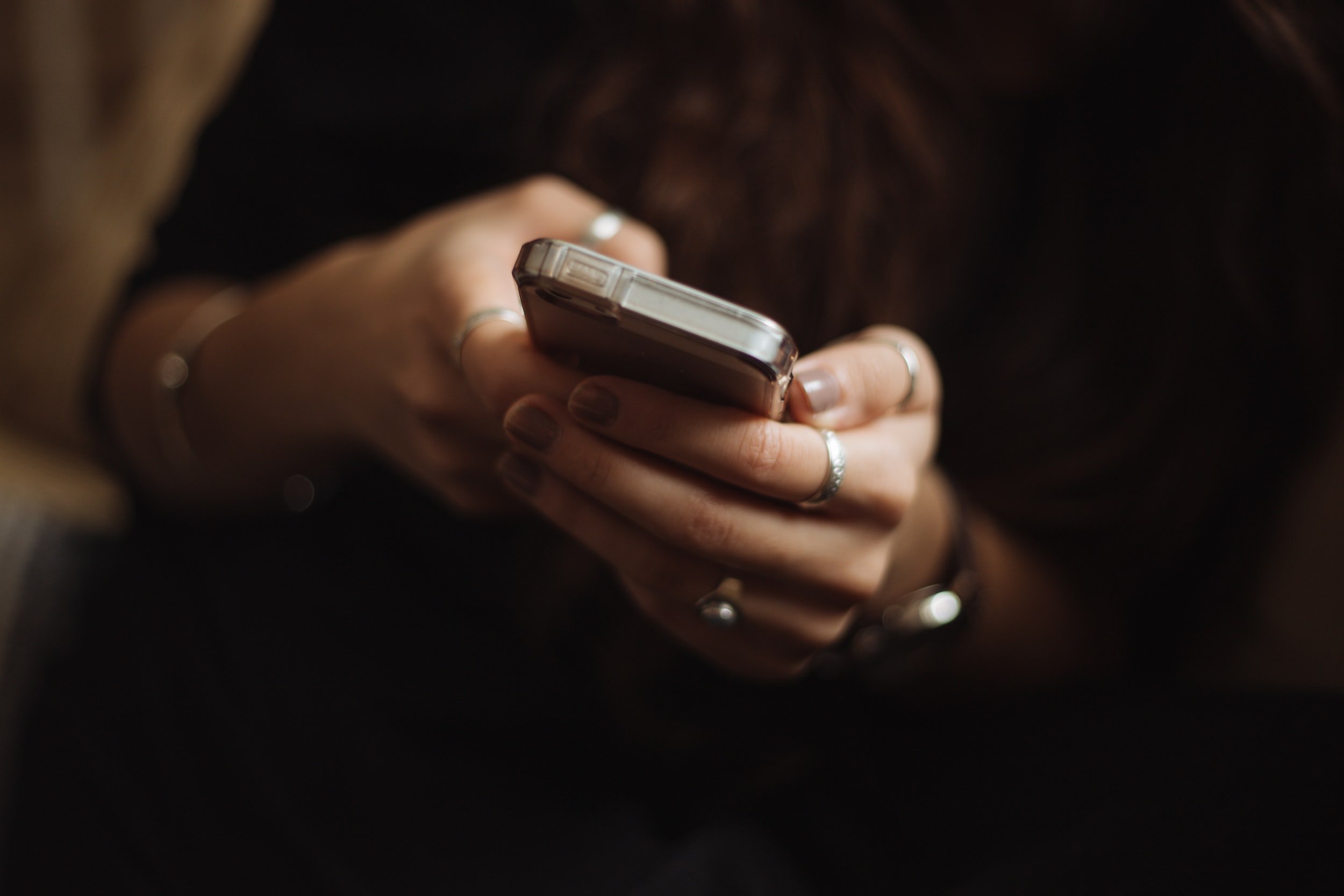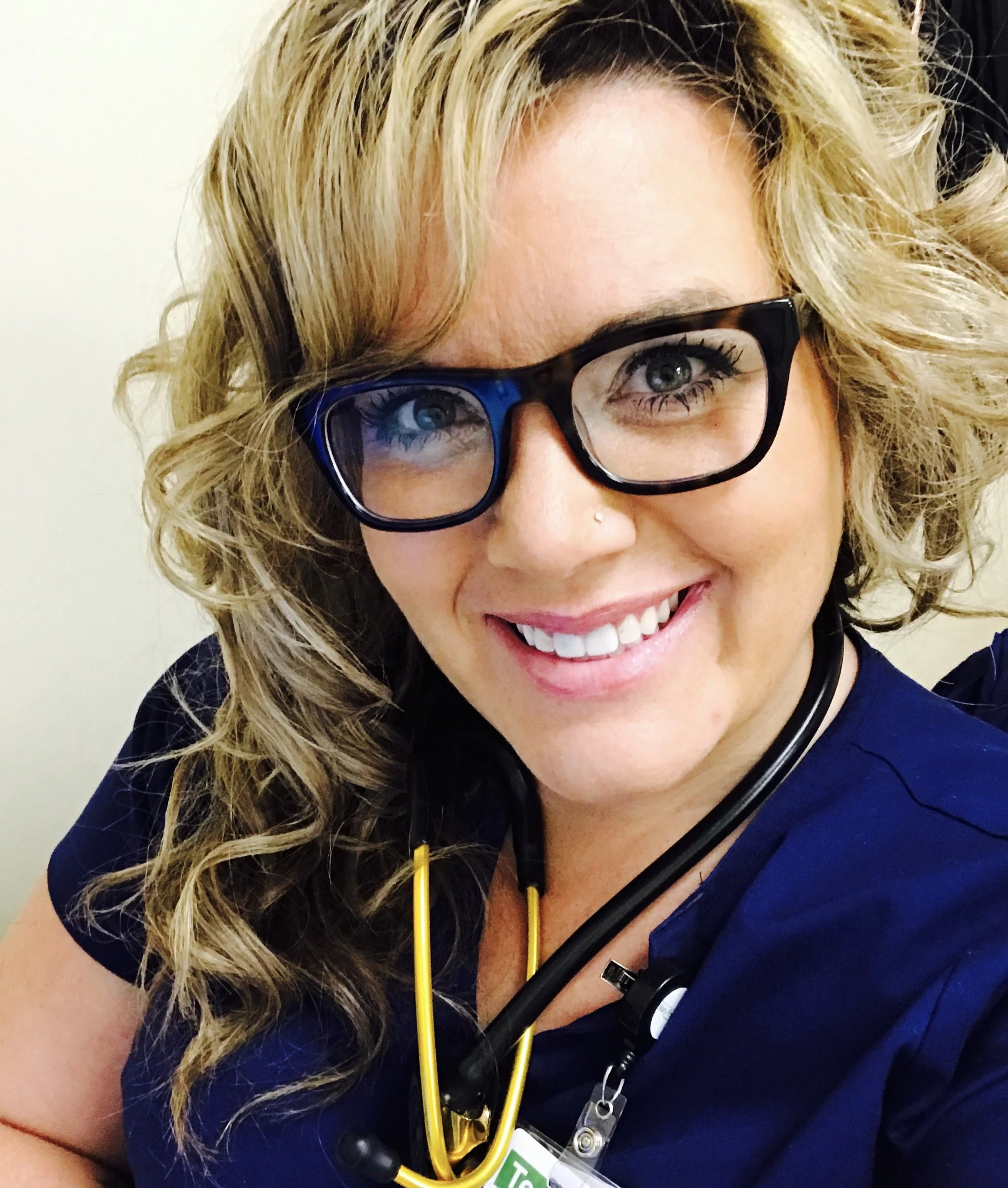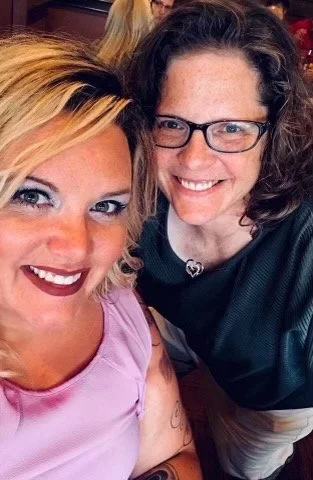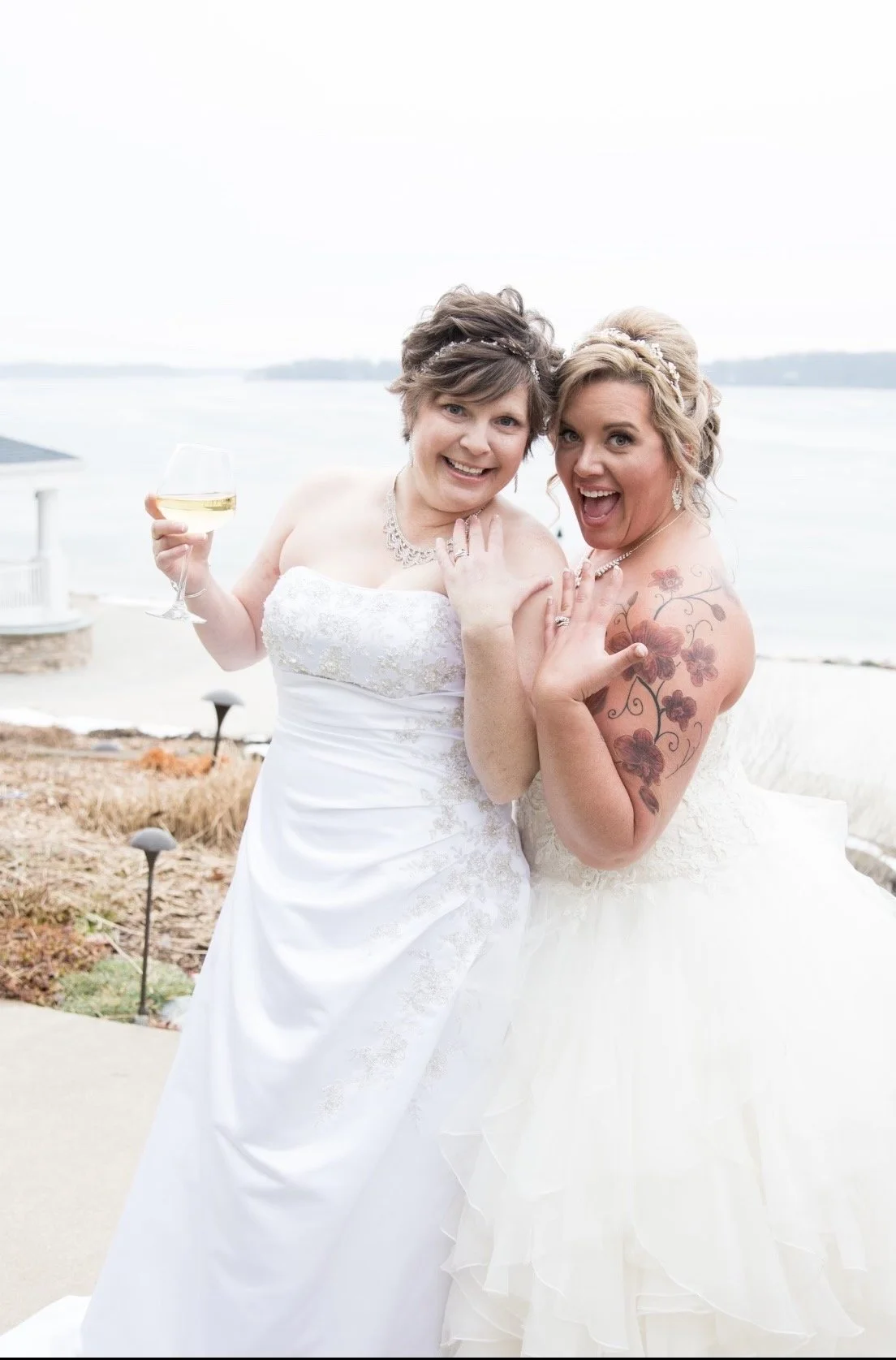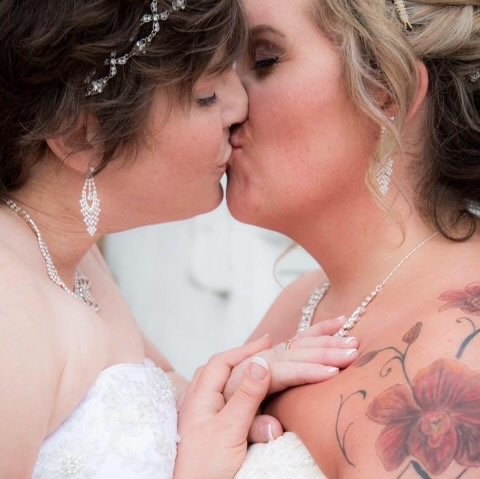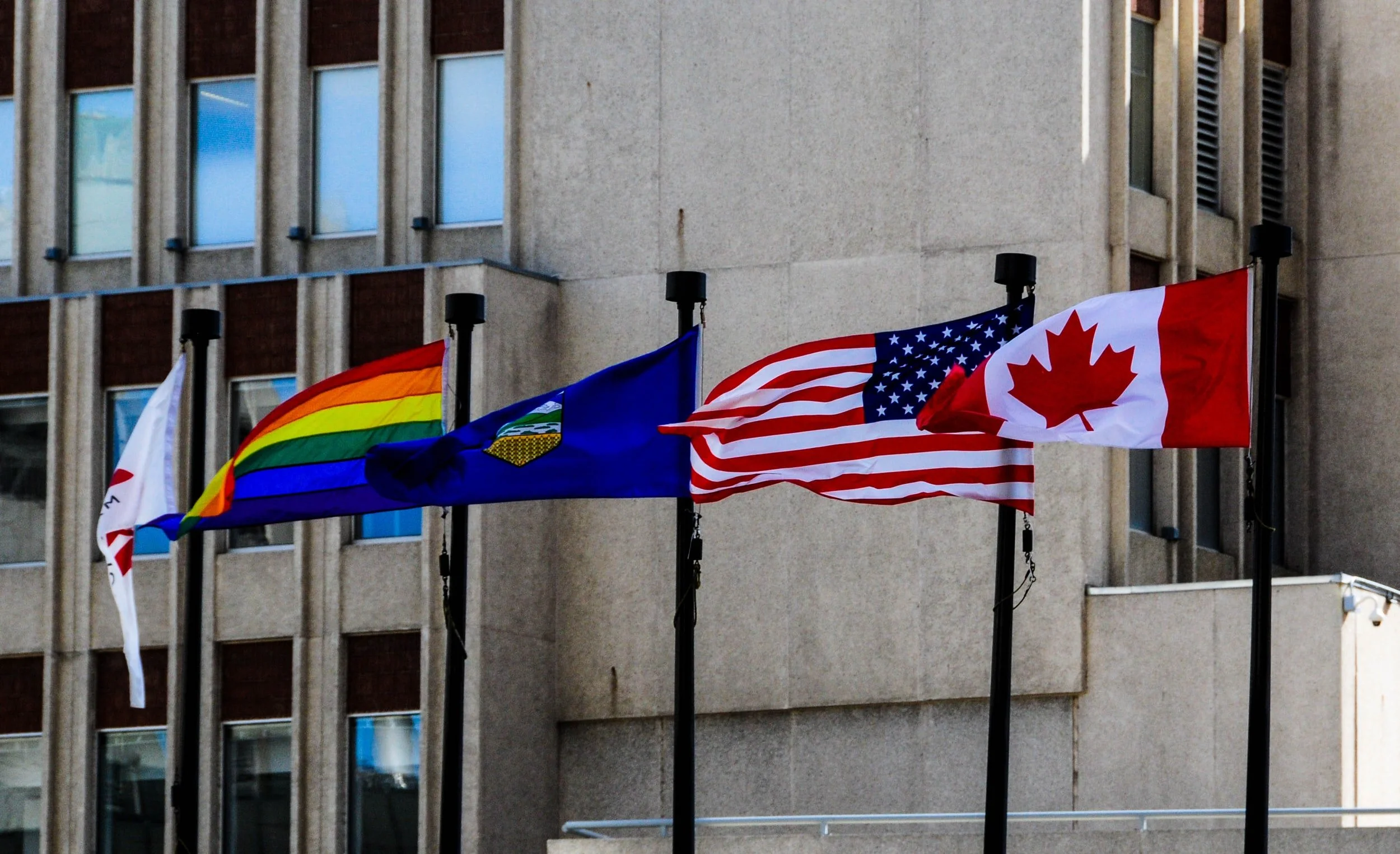LGBTQ+ Winter Olympics Athletes
The Winter Olympics have grown to be more inclusive over the years, but continues to hold a much smaller number of out athletes compared to its Summer counterpart. Nevertheless, it’s important to highlight the athletes of Team LGBTQ+ and their amazing achievements. Check out the list of LGBTQ+ athletes competing in the 2022 Beijing Winter Olympics.
Team USA
Amber Glenn-figure skating
Glenn is one of the few out bisexual and pansexual athletes in figure skating, and is the only queer woman on the USA figure skating team. She unfortunately tested positive for COVID, so is unable to compete, but stands as an alternate for the team.
Andrew Blaser-skeleton
Blaser has competed in a variety of other sports before taking up Skeleton, from the decathlon to cheerleading and volleyball. He is one of the few openly gay men on Team USA, with the 2022 Olympics marking his first Olympic run.
Brittany Bowe-speed skating
Bowe is set to compete in her 3rd Olympics, and was the first out athlete to earn a spot on Team USA for this year’s Olympics. She recently made headlines after giving up her spot in the 500m to fellow Olympian Erin Jackson after Jackson placed 3rd during the trials due to a slip; Bowe will still compete in the 1000m and 1500m competitions.
Jason Brown-figure skating
The coming 2022 Winter Olympics will be Brown’s first time competing as an openly out gay man, although this is his 3rd Olympics. He became one of the youngest male figure skating Olympic medalists during the 2014 Sochi Olympics. In 2018, he was unable to make it onto Team USA, but worked hard to come back this time around, earning his spot to compete with the team.
Timothy LeDuc-pair figure skating
LeDuc will be the first openly non-binary athlete to compete at a Winter Olympics, marking a huge milestone for trans and non-binary athletes who aspire to compete at the Olympics some day. They will be competing along with their skating partner, Ashley Cain-Gribble, after the pair won 1st at US Nationals in Jan 2022.
Netherlands
Ireen Wüst-speed skating
Wüst made history in 2006 as the youngest Dutch Olympic gold medalist and is now the most decorated LGBTQ+ Olympian ever. The talented bisexual woman will be competing in her 5th Olympics for her home country, hoping to add to her 5 gold, 5 silver, and 1 bronze.
France
Guillaume Cizeron-ice dancing
Cizeron is one of the most decorated ice dancers along with his competition partner, Gabriella Papadakis, with the pair breaking 28 world records. He came out as gay in May 2020 through an Instagram post of him and his boyfriend on International Day Against Homophobia, Transphobia, and Biphobia.
Kévin Aymoz-figure skating
Aymoz will be competing in his first Olympics, after winning 1st in the 2022 French Championships. He is openly gay and was one of 6 French LGBTQ+ athletes in the TV documentary We Need to Talk, which came out during Pride Month 2021.
Canada
Paul Poirier-ice dancing
Poirier will be representing Canada at the 2022 Olympics with dancing partner Piper Gilles after the pair won bronze in the 2021 World Championships. He will be one of two out gay men competing for Canada.
Eric Radford-pairs figure skating
Radford was the first competitive figure skater to come out during his career, rather than waiting for retirement- an occurrence not limited to just his sport but still a relatively common practice. He was also the first openly gay man to win a gold medal in Winter Olympics in 2018 and will be competing with skating partner Vanessa James.
Great Britain
Bruce Mouat-curling
Mouat currently leads, or “skips” as it’s called in the sport, Britain’s four-man curling team. He also has a highly decorated history representing his homeland of Scotland, and credits his success to coming out as gay.
Australia
Belle Brockoff-snowboarding
Brockoff came out as lesbian in 2013 and was a vocal part of the Olympic protests during the Sochi Olympics of Russian anti-gay laws. She will be competing in 3rd Olympics and her first since tearing her ACL in 2018.
LGBTQ+ 2021 MOVIE LIST!
Ailey, Documentary L(G)BTQ+- Alvin Ailey, who died in 1989, was a legendary pioneer who became the one of the first gay African Americans to start a major dance company. The Alvin Ailey American Dance Theater and Ailey School continue his legacy; this documentary, directed by Jamila Wignot and premiering at the 2021 Sundance Film Festival, tells Ailey’s story. (Available on YouTube, Google Play, Apple TV, Amazon Prime, and Vudu)
Benedetta, Historical Drama, Romance (L)GBTQ+- Inspired by a true story and set in 17th-century Italy, this drama from director Paul Verhoeven is about a lesbian Catholic nun named Benedetta Carlini (Virginie Efira), a religious mystic who begins having erotic visions and has an affair with another nun named Bartolomea (Daphne Patakia). (Available on Google Play and Vudu)
Boy Meets Boy, Drama, Romance L(G)BTQ+ - Harry has been partying for 48 hours when he meets Johannes on the dance floor of a club in Berlin. With 15 hours until his flight home, Johannes offers to help him print his boarding pass. This mundane task leads to a day together wandering the city. The contrasts in their lives and values force each one to confront their own truths. Boys Meet Boys is a feature length mumblecore about the journey of a brief encounter: the mark left by a fleeting moment of joy. (Available on YouTube, Google Play, Vudu, Amazon Prime, and Apple TV)
Breaking Fast, Romantic Comedy L(G)BTQ+-In this romantic comedy written and directed by Mike Mosallam, a white American named Kal (Michael Cassidy) and a Lebanese-American named Mo (Haaz Sleiman) fall in love in West Hollywood and learn to adjust to their cultural differences. Their courtship begins during Ramadan, a Muslim tradition of fasting and abstaining from sex for a month. (Available on YouTube, Google Play, Vudu, Apple TV, and Hulu)
Cowboys, Drama LGB(T)Q+- In this Tribeca Film Festival award-winning drama from director Ann Kerrigan, Troy (Steve Zahn) and his trans son Joe (Sasha Knight) hide out in the Montana wilderness together after Troy’s estranged wife Sally (Jillian Bell) refuses to accept Joe’s trans identity. Unlike many films that cast cisgender actors in transgender roles, 10 year old Sasha Knight plays the trans son Joe, marking an important milestone in transgender storytelling. (Available on YouTube, Google Play, Vudu, Amazon Prime, Apple TV, and Hulu)
Dragonfly Boy, Dramedy LGBT(Q+)- The film is about transformation and acceptance, made on a $0 budget for a student project. Freshly 21-year-old Graham is fighting over who he is and who he loves. In a world full of opinions and self-hatred, we watch as Graham grows with himself and the amazing people in his life around him. (Available on YouTube)
Eternals, Action L(G)BTQ+- From Marvel Studios, the Eternals, a race of immortal beings with superhuman powers who have secretly lived on Earth for thousands of years, reunite to battle the evil Deviants. (Available in theaters, will soon be on Disney+)
Everybody’s Talking About Jamie Musical Drama, L(G)BT(Q+)- What’s a gay teenage boy to do when he wants to be a drag queen? This cinematic version of the hit British stage musical of the same name tells the story of Jamie New (Max Harwood), who gets pushback for wanting to express his fabulousness at his school’s prom and in everyday life. (Available on Amazon Prime)
Haymaker Action Drama LGB(T)Q+- After being threatened by a thug, a seductive transgender entertainer named Nomi (Nomi Ruiz) is rescued by a retired Muay Thai fighter named Nick (Nick Sasso, who also directed this action drama). The two go on the run together and become close. (Available on Amazon Prime)
I Carry You With Me (Te Llevo Conmigo) Drama L(G)BTQ+-Based on a true story, this drama follows two Mexican lovers — Iván (Armando Espitia) and Gerardo (Christian Vázquez) — whose decades-long romance is tested when one of them moves to New York City to pursue his dream of becoming a chef. (Available on Amazon Prime, YouTube, Apple TV, Vudu, and Starz on 1/5)
The Land of Owls Drama (LG)BTQ+- A pair of Brooklyn couples work through their relationship issues at an upstate retreat. In the isolation of the Catskill Mountains, the retreat leader pushes the couples through a weekend of exercises that force them out of their comfort zones. Removed from the routine distractions of city life and engaging in honest communication for the first time, they have a chance to save their relationships – or to leave them behind. (Available on Apple TV and Amazon Prime)
Ma Belle, My Beauty Drama LGBT(Q+)- Bertie (Idella Johnson) and Lane (Hannah Pepper-Cunningham) were lovers in a polyamorous relationship with Fred (Lucien Guignard) until Lane “ghosted” the other two. Bertie and Fred are now married to each other, and Lane shows up for a surprise reunion in southern France. (Available on Google Play, Vudu, Apple TV, Amazon Prime, and YouTube)
The Man with The Answers Drama L(G)BTQ+- A former Greek diving champion and an eccentric German student take an adventurous road-trip of rediscovery from Bari to Bavaria. A picture-postcard travelogue about the familial ties that bind, the boys that catch our eye, and the twists and turns that lead us home. (Available on Amazon Prime)
Maschile singolare, Drama LGBT(Q+)- This movie explores the modern relationship problem of a young queer guy Antonio. He is a 30-year-old family man, whose life takes an unexpected turn after he suddenly broke up with his husband. (Available on Amazon Prime)
My Name is Pauli Murray Documentary LGBT(Q)+- Oscar-nominated RBG directors Julie Cohen and Betsy West helmed this documentary about queer activist Anna Pauline “Pauli” Murray, who died in 1985. Murray had the unusual distinction of being a lawyer, an Episcopal priest, and a feminist. (Available on Amazon Prime)
No Ordinary Man Documentary LGB(T)Q+- The story of transgender jazz musician Billy Tipton, who passed away in 1989, comes to life this documentary from directors Aisling Chin-Yee and Chase Joynt. (Available on YouTube, Google Play, Vudu, and Apple TV)
Operation Hyacinth Historical Drama L(G)BT(Q+)- Not satisfied with the result of a murder investigation in Warsaw's gay community, an officer in 1980s communist Poland resolves to uncover the truth. (Available on Netflix)
Pray Away Documentary (LGBTQ+)- a comprehensive review of conversion therapy and religious discrimination of LGBTQ+ people in the US. (Available on Netflix)
Single All The Way Dramedy L(G)BTQ+- Desperate to avoid his family's judgment about his perpetual single status, Peter convinces his best friend Nick to join him for the holidays and pretend that they're now in a relationship. (Available on Netflix)
The Sound of Identity Documentary LGB(T)Q+- Lucia Lucas, the first openly transgender female baritone to perform a principal role in an opera on an American stage, gets the spotlight in this Shout! Studios documentary directed by James Kicklighter. (Available on Starz, Philo, YouTube, Google Play, Vudu, Apple TV, and Hulu)
Supernova Drama L(G)BTQ+- long-time partners Tusker and Sam go on a road trip across England after Tusker is diagnosed with early onset dementia. (Available on YouTube, Google Play, Amazon Prime, Vudu, Apple TV, and Hulu)
Two of Us Drama (L)GBTQ+- This French-language dramedy is France’s official 2021 Academy Awards selection for Best International Feature Film. The movie is a love story between two closeted senior citizens and neighbors — Nina (Barbara Sukowa) and Madeleine (Martine Chevallier) — whose long-term relationship is disrupted when an unexpected event threatens to tear them apart. It’s the feature-film directorial debut from Filippo Meneghetti. (Available on Hulu, YouTube, Google Play, Vudu, Amazon Prime, and Apple TV)
The World To Come Historical Drama (L)GBTQ+ - In 1850s Schoharie County, New York, two farmers’ wives — Abigail (Katherine Waterston) and Tallie (Vanessa Kirby) — have a romance with each other while unhappily married to their husbands. (Available on YouTube, Google Play, Amazon Prime, Vudu, Apple TV, and Hulu).
The Pink Triangle.
The Holocaust is by far one of the worst instances of race superiority, ethnic cleansing, and genocide in the last 100 years. In addition to the 6 million Jews targeted and killed, the Nazis also targeted the then-occupied residents of Poland, Romani people*, Soviet prisoners of war (POW), Jehovah’s Witnesses, Czechs, Byelorussians (Belarusians), French, Russians, Yugoslavians, Ukranians, even Germans and other nationalities, as well as homosexuals, sex workers and other social “undesireables”. The Nazis had a badge coding system in order to signify what group(s) an individual was a part of; an example would be a yellow triangle under a red triangle signifying a Jewish political prisoner.
The now well-known symbol of pride pink triangle was used to mark homosexual men -or those identified as such, like bisexual men and transgender women- as well as sex offenders, pedophiles, and zoophiles. The black triangle was used to mark “asocial” and work-shy individuals: Romani people, mentally ill or disabled individuals, alcoholics, drug addicts, beggars, draft resisters, prostitutes, and lesbians. Homosexuality, or “unnatural indecency/intercourse-like act”, was made illegal in Germany in 1871 but was not enforced until the Nazis took power in 1933.
According to Time and historian Robert Beachy, the law actually encouraged scientific study of sexual preferences and pushed for more scientific understanding of human sexuality. Once the Nazis began to enforce the law, gay bars were shut down, books on sexuality were burned, and Ernst Röhm was murdered for trying to overthrow Hitler and his homosexuality. Survivor Pierre Seel states that in the camps “there was no solidarity for the homosexual prisoners; they belonged to the lowest caste.” After the war ended, when camps were liberated, East and West Germany enforced the homosexuality ban, with many remaining incarcerated until the 1970s and the law not being officially repealed until 1994.
Even as the Allied powers began to remove Nazi policies and their impact, the law on homosexuality was left alone. However, as gay and lesbian liberation movements began to grow in the West, the oppressive history of gays and lesbians during the war began to come to light.
TIME Magazine made the first reference to the pink triangle as a pride symbol in June 1977, when talking about a protest in Miami-Dade County on the repeal of local anti-discrimination protections in housing, employment, and public accomodations. The writer of the TIME article spoke of protesters on both sides, sharing the lengths conservative, religious repeal supporters would go to; Anita Bryant stressed how “homosexuality…was against God’s law.”
The gay protesters against the repeal were said by the writer to “also overdramatize their case,” sharing how they wore pink triangles “reminiscent of the yellow star that Jews were forced to wear in Hitler’s Germany. This tactic backfired badly.” In an updated 2018 article on the history of the triangle, TIME shared a note from a reader of the 1977 article, saying how the triangle was not reminiscent, but analogous, “as both the star and the triangle were real artifacts of that time,” with the reader adding “Gay people wear the pink triangle today as a reminder of the past and a pledge that history will not repeat itself.”
As the AIDS epidemic ramped up in the 80s, activists from AIDS Coalition to Unleash Power (ACT-UP) used the pink triangle as their symbol to raise awareness of the public health crisis. Avram Finklestein designed the triangle, which was upright instead of upside down, after William F. Buckley wrote in a 1986 New York Times op-ed that HIV/AIDS patients should get tattooed to warn partners. The triangle was made a more vibrant fuschia rather than pale pink, along with the “Silence=Death” motto.
The pink triangle came back into the spotlight in 2017 due to reports of gay men being prosecuted in Chechnya, with protesters scattering pink triangles reading “stop the death camps” outside of the Russian Embassy in London in April 2017. The pink triangle can still be seen in pride parades, on social media, and businesses. May we remember those who came before us and paved the way for where we are today.
*The term “Romani” is used to describe an ethnic group originating from the Rajasthan, Haryana, and Punjab regions of modern-day India. They are known as nomadic travelers. The only accepted terms to refer to the Romani people, as decided by the World Romani Congress in 1971, are Romani or Roma. The term “g*psy” is not used by the Romani people due to its history as an ethnic slur and connotations of othering and illegality.
Additional Links / References:
History of the pink triangle:
https://www.history.com/news/pink-triangle-nazi-concentration-camps
https://time.com/5295476/gay-pride-pink-triangle-history/
https://www.nationalww2museum.org/war/articles/the-men-with-the-pink-triangle-heinz-heger
https://encyclopedia.ushmm.org/content/en/article/lesbians-under-the-nazi-regime
Help is one call away!
The holidays can be a bittersweet time. While for some it can be a time of rejoicing, connecting, and enjoying the “most wonderful time of the year”, for others it is a time of loneliness, painful memories and triggers. But we are here to say that you are not alone, there are resources for you depending on what support you are in need of. There are people out there who will not only listen, but can help lift you up as well. The holidays do not need to be isolating; your trauma and how you respond to it is valid, you are not alone, don’t let it isolate you. Some tips from the Substance Abuse and Mental Health Services Administration include asking “What helps and what hurts?”, assessing your stress responses to triggers, and making a plan of how you will protect yourself emotionally, mentally, and physically this holiday season. Below are some hotlines with different focuses to help you stay safe and secure, and connect you with resources.
HOTLINES
Disaster Distress Helpline: Call or Text 1-800-985-5990
SAMHSA’s Disaster Distress Helpline provides 24/7, 365-day-a-year crisis counseling and support to people experiencing emotional distress related to natural or human-caused disasters.
Fenway Health: (888).340.4528 for adults 25+, (800).399.PEER for under age 25.
An LGBT Helpline and a Peer Listening Line from Fenway Help, which people can call from across the country.
The Gay, Lesbian, Bisexual and Transgender National Hotline: (888) 843-4564
Anonymous and confidential hotline where callers can speak on many different issues and concerns including coming out issues, gender and/or sexuality identities, relationship concerns, bullying, workplace issues, HIV/AIDS anxiety, safer sex information, suicide, and much more.
The GLBT National Youth Talkline (youth serving youth through age 25): (800) 246-7743
Both provide telephone, online private one-to-one chat and email peer-support, as well as factual information and local resources for cities and towns across the United States.
Rape Abuse and Incest National Network (RAINN): (800) 656-HOPE / (800) 810-7440 (TTY)
The nation's largest organization fighting sexual violence, RAINN also carries out programs to prevent sexual violence, help victims and ensure that rapists are brought to justice.
StrongHearts Native Helpline: 1-844-7NATIVE (1-844-762-8483)
StrongHearts is a culturally-appropriate, anonymous, confidential service dedicated to serving Native American survivors of domestic violence and concerned family members and friends.
Trans Lifeline: (877) 565-8860
Trans Lifeline is a trans-led organization that connects trans people to the community, support, and resources they need to survive and thrive.
The Trevor Project: (866) 488-7386
The Trevor Project is the leading national organization providing crisis intervention and suicide prevention services to lesbian, gay, bisexual, transgender and questioning (LGBTQ) young people ages 13-24.
The True Colors United: (212) 461-4401
The True Colors Fund is working to end homelessness among lesbian, gay, bisexual, transgender, queer, and questioning youth, creating a world in which all young people can be their true selves. True Colors United runs a database of service providers.
U.S. National Domestic Violence Hotline: (800) 799-7233 (English/Spanish) (800) 787-3224 (TTY)
They also have an online chat feature available. Operating around the clock, seven days a week, confidential and free of cost, the National Domestic Violence Hotline provides lifesaving tools and immediate support to enable victims to find safety and live lives free of abuse. Highly trained, experienced advocates offer compassionate support, crisis intervention information and referral services in over 170 languages.
Day Zero.
I would venture to say you have no idea how your actions and words have infiltrated and impacted my life . How your hatred continues to deliver slight yet direct blows with an attempt to utterly destroy me. How your infectious plague has trickled down to sabotage every aspect of who I am, who I am yet to be and those lives which are directly and indirectly trussed to mine.
You- homophobia are a disease. You infiltrate the minds of individuals and symptomatically cloud their view so their eyes can’t see humans as they are despite all other attributes but solely on the grounds of who they love. You take the lives of hundreds of thousands of people every year. Congratulations - You are an epidemic. You destroy families. You create homelessness and increase desperation leading to suicide after suicide after suicide and oh homicide. The greatest symptom of your debilitating affect is hate which grows unrestrained to convince one to murder another of our own kind merely for the minute factor that they love differently than you.
Like the most aggressive form of cancer you are the cells that multiply out of control in the minds of so many. Although I don’t know that there will ever be a cure for you, I know that my speaking out brings light into your terrifying darkness and a sword that will pierce hearts and open minds. The reality is my speaking is all but a mere effort to save my own life because It’s time, I’ve had enough.
I’ve been lead to believe you’ve stolen my dignity and self respect. My integrity and professionalism, tenacity and ability to share with the world something good are tainted and greatly discolored by your rampant blows. It has all been shattered by your darkness. You have crippled me and pushed me in to hiding. I’ve become a person who’s disability forces them to not leave the safety of my 4 bedroom walls. My anxiety and depression and post traumatic stress disorder, created by the assault you’ve had on my life holds me hostage in my car in moments when I’m supposed to be serving my patients and families. It holds me in the aisle at the grocery store because I know there’s someone infected with you on the other side who previously audibly accosted me in public.
My joy has been diminished, my reflection in the mirror resembles a weak and weary soul who is desperate for freedom of oppression. Perhaps it’s because you have taken from me literally everything and anything that I possess of any worth. Through it all I am forced to realize what I have left. Most of which is forever unrecoverable. The patient experiences, the longevity necessary to build my career, the relentless attempts to leap forward and build again a life with hopes of building a meaningful legacy.
It’s 2020, times have changed and our society is vastly attempting to eradicate you. Yes I am aware, “we have come so far!,” and I have heard countless comments about, “marriage is legal, you have your rights, what more do you need?,” etc. I’m not convinced, I continue to survive your attacks and others need to abolish the blinders from their eyes and then encourage others to do the same so as to understand and trust that just as sexism, ageism, and racism to name a few are still globally viral, you homophobia and your horrific affects thereof continue to kill and destroy many. How you might ask?
Lets start with the time that you violently through the judge and our legal system took my children away from me for three months because you were convinced that my being gay must be a mental illness or life crisis. The moment when I learned they were told I abandoned them and didn’t want them anymore because my sin was more important and my desire was to sleep with a woman. When you diminished Who I am as a person, a mother down to only my sexual orientation.
That time that you walked into the trauma bay and recognized me from church and your loved one was barren on the table and I actively performing CPR on them. I was literally the heart beating for him, I alone was circulating life through his lifeless body. You refused to see me at all, only my sexual orientation. Although I, one of the most trained trauma nurses in that room you began to scream in front of my peers for me to be removed from him and told me to step away and surrender my position and life saving efforts to a nurse who graduated just weeks prior with no experience.
How about the time you took me in to your office and with cowardliness hid behind vague words and use of irrelevant rationales to inform me that my being a lesbian did not fit the culture of your practice, your values and beliefs system and therefore I was no longer welcomed to work next to you. Interesting though the day prior, before you heard the news that I was married to a woman, you told me that I was one of the best nurses you’d hired with the most beautiful bedside manner you’d witnessed in years.
Or the latest attempted terminal blow when you suddenly ripped me from the bedside of the the most frail of patients, the dying. Tragically eradicating and severing ties between myself as a hospice nurse from several patients and their grieving weary loved ones without an opportunity for closure. You severed a bond and forced me to abandon my patients. THEY WERE DYING and suddenly all the times I’ve cried with them, prayed with them, sang to and with them, bathed them and dressed them, listened to their greatest joys, deepest desires and fears have become tainted by your dark hostility.
Your a coward and quietly ashamed of your bias and You’ve covered yourself with deception claiming my nursing skills or abilities or boundaries were lacking or flawed thus directly deepening your diseased affects on my self view. It became apparent that at any moment anything can be taken from me NOT because of my sexual orientation but due to your hate.
Time and time again I’ve experienced this but now it has spread through me and into the lives of others. You’ve raped me and have USED ME to spread your vile disease resulting in heightened doubt and fear. I have questioned to my very core who I am and who I once was down to my professional being. I’ve become desperately symptomatic of fear and one surviving your hold and retreat deeper into my self because I CANNOT allow myself to continue the vulnerability. I refrain to connecting with anyone because I must prevent bringing additional pain and suffering, undue harm especially to my patients who have invited me in to journey with them through one of the most intimate times of their lives, dying. I’ve come to believe your lies that I had no business being there or being a part of this ministry, this profession any more.
I will admit you have crippled me in so many ways. I am coming to understand why I suffer immensely at times with depression, anxiety and suicidal ideation. Why I’m living with post Traumatic stress disorder. I’ve bought in. I now see what others see when they look at me. I believed your projection of who I am is in fact who I am. I have allowed you’re sick and disgusting view of me to shape me into this disabled body because I’m unable to get outside of my mind and the fear of facing another human who embodies you restrains me inside my own living hell. I am shattered and broken but make no mistake, I am still alive.
Let me explain something to you. At the end of the day you can’t change my DNA. I’m not sure you heard or understood what I said, your efforts have failed because YOU CANNOT change my DNA. You see my DNA and who I am is not in anyway just that I am a woman, an Italian, a lesbian. Its not merely that I have green eyes and sun-kissed skin tones. My very DNA structured my dignity. It carries my tenacity, my vulnerability, my personality which in case you missed the memo can outshine even the darkest of nights. My life experiences have groomed me into a survivor, a fierce survivor. I will take every single integral microscopic cell that embodies who I am and with all that I am that is woven into my very DNA And I will defeat you. I will grow stronger and brighter and I will be in this world what I am called to be because no matter how much you hate me and no matter how much you think you can destroy my life you can’t have it because it doesn’t belong to you!
You see I’m educated. I know how this works and I’ve seen life and death. I have experienced life and death. I am one of the best nurses you will ever meet and when given the chance I will show you a love and compassion that you quite possibly have never experienced before. What’s more is that I’ve held the hand of more than one individual who’s attempted to take or did take their life because the darkness was too heavy and the light although you could not completely diminish it was no longer enough. I refuse to fall victim to this.
Homophobia - like cancer when all other treatments have been exhausted and they are no longer responding appropriately we take the frail human body down to the cellular level to the brink of death. You’ve already done this for me. At that point stem cells are planted and those particles of DNA that are woven in us from the moment of conception take hold of them and start to grow something new. Cells that were already created and a part of my DNA and you have no control or power over. Today is my stem cell transplant, it’s Day ZERO, and I will make every single effort to allow every particle of me to become who I am first and foremost above and around you regardless of your desire to put me in the grave.
So I want it back. I am taking my life back. Not the life that I am surviving right now but the one I was created to thrive in. The one where I am out in the community and serving and loving and showing Christ - like compassion and forgiveness and so much more. Yes you heard me right I am a lesbian who loves Jesus and I know that you homophobia would like the world to believe that this is a counter diction but it’s not. And you no longer have a place in my life and how I move forward living it. I will walk with my head high and no longer feel like I am a disgusting person or somehow a disgrace on this earth because of who I chose to marry and love.
Homophobia like one of the most infectious diseases known on earth is rampant and it’s time that we start exterminating it for the sake of all especially those who we love. I’m going to promise you this no one was born with a genetic condition of hatred. Its time we start vaccinating against it and raising up our children to love and embrace our fellow human beings despite their differences, despite their sexual orientation.
Nevertheless, it’s in my DNA to tell you that I’m going to chose to love you, to forgive you and to have a greater hope for change in your hearts, your minds and your actions. If for nothing more but because my soul deserves peace.
Today is my Day Zero.
Relentlessly Yours,
Mrs. Tennille Marie Dobbs
Tdor - A Day to Remember.
November 20th marks Transgender Day of Remembrance, a day of honoring and remembering the trans* and non-binary folks whose lives were lost in anti-trans violence, according to GLAAD. In the United States, despite the progress made in the last century and the growing visibility of those on all parts of the gender spectrum, anti-trans violence has grown in recent years. 2020 was the deadliest year in terms of transphobic violence, with at least 44** trans* people killed in the US; 2021 surpassed 2020 as the deadliest year with at least 46** (as of 11/17/21, this figure may not, and most likely isn’t, accurate as of publication).
This TDOR, we want to share the names of all those lost this year as well as those who were misgendered and/or deadnamed in their report or have not been found/marked as missing. It is vital that we share their stories and say their names; the largest group impacted by the growing violence are at the intersections of race, gender, and class-- BIPOC trans* women.
*trans(asterisk) is used as an umbrella term to incorporate all transgender, non-binary, and other non-cisgender identites.
**at least, due to reports going mis/unreported, delays in reports, or deaths not being connected to their identity
January 6th: Tyianna “Davarea” Alexander, a 28-year old Black trans woman, who was shot and killed in South Side Chicago, along with her friend Bradon Gowdy. Her death marked the first known transgender murder of 2021 and followed another similar murder, Courtney “Eshay” Key, in the same Chicago neighborhood just weeks eariler.
January 9th: Samuel Edmund Damián Valentín, a young Puertorican trans man, was found with multiple gunshot wounds when his body was struck by a car, as he was in the middle of the street. He was deadnamed and misgendered in the original report; his death marked the 7th transgender murder in Puerto Rico in a year and led to a boiling point at the violence against transgender Puertoricans.
January 17th: Bianca “Muffin” Bankz, a 30-year-old Black trans woman, was killed in a murder-suicide and was found alongside her suspected killer, Moses Allen in Atlanta, GA. She had recently been able to secure her own housing along with her friend, began medically transitioning, and had a job interview scheduled for the day after she was murdered.
January 25th: Dominque Jackson, a 30-year-old Black trans woman and prominent community activist, was found dead with a gunshot wound to the head after she crashed her car into a telephone pole in Jackson, Mississippi. She was deadnamed in the original police report and is still listed by her birth name, alongside her chosen name, in local news.
January 28th: Fifty Bandz, a 21-year old Black trans woman, was murdered by her former partner in Baton Rouge, LA. Michael Joshua Brooks had previously threatened Bandz with violence and was not open about his relationship with her; he was arrested on charges of second-degree murder.
February 4th: Alexus “Kimmy Icon” Braxton, a 45-year-old Black trans woman, was found dead in Miami, Florida of suspected homicide. She marked the 10th transgender person lost to violence in Florida since 2018.
February 18th: Chyna Carrillo (Cardena), a 24-year-old Latinex trans woman, was beaten to death by Juan Carter Hernandez, who refused to cease his brutality once police arrived on scene and had previously served time for murdering his wife. Her death marked at least the third in Pennsylvania in the year up to that point.
February 22nd: Siblings Jeffery “JJ” Bright, 16 year-old trans boy, and Jasmine Cannady, 22-year old non-binary person, were shot and killed by their mother in Ambridge, PA. They were both very active in their community, with young Jeffery being involved in a local LGBTQ+ non-profit and Jasmine tagging along on occasion.
February 24th: Jenna Franks, a 34-year-old trans/genderfluid person, was found dead in Jacksonville, North Carolina, with her death being investigated as a homicide and hate crime.
March 3rd: Diamond Kyree Sanders, a young Black trans woman, was shot and killed in Cincinnati, OH. The shooting took place at 4am, and Sanders was found at the scene and transported to the hospital, where she later died due to her injuries. Local police denied that her killing was related to her “lifestyle” and was rather a “crime of greed” (despite being transgender is not a lifestyle and studies have shown that Black trans women face much higher rates of discrimination).
March 17th: Rayanna Pardo, a 26-year-old trans woman of color, was seen fleeing alleged harassers when she was struck by an oncoming car. Her family demanded her death be investigated as a homicide and hate crime.
March 19th: Aidelen Evans, a 24-year-old Black trans woman, was found dead in Fort Arthur, TX, with her cause of death being unknown until mid-July. She was experiencing houselessness, with family not seeing her since February. While her death has currently been ruled as foul play, she was repeatedly deadnamed and misgendered by the press since her death.
April 4th: Jaida Peterson, a 29-year-old Black trans woman, was found dead in a hotel room in Charlotte, NC after a welfare check was called in. In original reports, Peterson was deadnamed and misgendered in police reports and media, an unfortunately common occurrence and further demonstration of the difficulty in identifying trans individuals who are killed.
April 8th: Dominque Lucious, a 26-year-old Black trans woman, was shot and killed in Springfield, MO. The shooting was reported around 7am by a 911 caller; a witness reported that Lucious was expecting a guest from a dating site and that they were woken up by gunshots and a shooter pulling away, with Lucious shot and later pronounced dead at the scene.
April 15th: Remy Fennell, a 28-year-old Black transgender woman, was the second of two deaths in Charlotte, NC. Fennell was found in a hotel room, just as Jaida Peterson was two weeks prior. Fennell moved to North Carolina to focus on her hairstylist career and was known as Remy Kreations.
April 21st: Tiara Banks, a 24-year-old Black trans woman, was one of two shooting victims in the West Pullman neighborhood of Chicago late in the evening. CPD was unsure if Banks’ gender played a role in her attack; her death marked the 3rd in Chicago in just 4 months.
April 23rd: Natalia “Smüt” Lopez, a 24-year-old Black/Latinex trans woman, was found stabbed multiple times and later died at the hospital due to her injuries. Her reported partner confessed to stabbing her over a 911 call but later pled not guilty to the murder charge.
April 23rd: Iris Santos, a 22-year-old Latinex trans woman, was shot and killed in Houston, TX after a shooter walked up to her while sitting outside across the street from her apartment and started shooting at 9:30pm.
April 24th: Tiffany Thomas, a 38-year-old Black trans woman, was fatally shot in Dallas, TX and found at a car wash. Unfortunately, not much was known about Thomas’ personal life, but her death was mourned by her entire community.
April 24th: Jahaira DeAlto, a 42-year-old trans woman of color, was stabbed to death alongside the assailant’s wife, Fatima Yasin. DeAlto was an active member of the community and ballroom mother of the House of Balenciaga and had reportedly taken in Yasin, her husband, and two children.
May 1st: Keri “Bobo” Washington, a 49-year-old Black trans woman, was found dead in the back of an apartment building in Clearwater, FL. Unsurprisingly, she was misgendered in news reports. A suspect was identified as someone known to Washington; not much else was made known about Washington’s life, but she was honored by friends and loved ones on social media.
May 2nd: Thomas Hardin, a 35-year-old Black trans woman (used both he/him and she/her), was found in her home after no one had heard from her; friends state that she was shot. It was believed that Hardin was among at least 4 homicides across two states and may have partially been due to her previous romantic relationship with one of the two suspects.
May 3rd: Whispering Wind Bear Spirit, a 41-year-old Indigneous nonbinary person, was shot during an attempted robbery at friend’s house in York, PA. Bear Spirit described themselves as “Shawnee by birth and Potowatomi by relations”, with both tribes having populations in the Midwest. They were unfortunately deadnamed by police and media outlets.
May 4th: Sophie “Tu Chaparrita” Vasquez, a 36-year-old Latinx trans woman, was found shot in her home in Atlanta, GA. She was deadnamed and misgendered in police reports, until news sources like Transgender Planet and local Spanish-speaking news picked up the story. She is at least the second trans woman murdered in the Atlanta metro this year.
May 4th: Danika “Danny” Henson (aka Pryynce Daniel, Niia Da Don), a 31-year-old Black trans woman, was shot and killed in Baltimore, MD. She also may have identified as genderfluid; she was still early in her transition according to friends and family.
May 8th: Serenity Hollis, a 24-year-old Black trans woman, was shot in Albany, GA with the Albany police department releasing a video of the shooting on its facebook page and misgendered and deadnamed in their reports. Her death marked at least the 3rd in Georgia this year.
May 11th: Poe “Legion” Black, a 21-year-old mixed Indigenous two-spirit transgender man, was found in the Coachella Canal near the Mexico-California border. The sheriff’s office originally used his former name; Black was an artist that had moved to Slab City from Tennessee and had been experiencing housing instability and chronic health issues.
May 19th: Oliver “Ollie” Taylor, a 17-year-old white trans boy, died a week after he was kidnapped and shot; bystander Arik Reed attempted to stop the kidnapping and was shot, he was found at the scene in unknown condition. Oregon State Police stated that the kidnapping was not random.
May 24th: Haven Bailey, a young white trans man, was shot in a Chicago suburb by police after approaching them with a pellet gun. Family had reported that he was suicidal, struggling with mental health and addiction, and had mentioned “death by cop”. He was misgendered by police and a manager of the halfway house Bailey had been staying in.
June 12th: Tierramarie Lewis, a 36-year-old Black trans woman, was shot in a suburb of Cleveland, OH. Her death went misreported for over a month, when she was labeled as a John Doe. A city employee worked to gain information about her death, which is linked to her deadname despite records stating she had it legally changed.
June 14th: E.J. Boykin (aka Novaa Ru Watson), a 23-year-old Black trans man, was shot and killed outside of a Family Dollar in Lynchburg, VA. Local police stated they didn’t believe his death was a hate crime and proceeded to deadname him in news releases.
July 17th: Taya Ashton, a 20-year-old Black trans woman, was found in her apartment with a gunshot wound in Suitland, MD. While police did not see any direct motivation of her death being linked to her gender identity, her family referred to her death as a hate crime and was at least the 2nd violent death of a trans woman of color in Maryland.
July 31st: Shai Vanderpump, a 23-year-old Black trans woman, was found with a gunshot wound to the face in Trenton, NJ and later died at the hospital. Police were unsure of a motive but were investigating whether it was bias-related; friends stated she may have been killed while protecting someone else.
August 7th: Miss CoCo, a 44-year-old Black trans woman, was shot in an unhoused encampment in Dallas, TX. Her death marked the 7th trans person killed in Dallas since 2017. At the time of her death, Dallas PD was investigating her death as a hate crime despite gender identity not being a protected category.
August 23rd: Pooh Johnson, a 25-year-old Black trans woman, was found with multiple gunshot wounds in a vehicle in Shreveport, LA. Johnson worked as a makeup artist under the name Titanizer Mua.
September 1st: Zoella Martinez, a 20-year-old Latinex trans woman, was shot 5 times after getting inside a vehicle at Belmondo Reach Natural Area. Martinez met a man at the Natural Area whom she stated stole over $1000 from her; a friend present at the scene stated the car sped off after Martinez entered the vehicle and security camera footage captured 5 flashes of light consistent with muzzle flashes within the car.
September 6th: Disaya Monaee Smith, a 32-year-old Black trans woman, was shot and killed in the Chicago Suburb of Dolton. She was shot twice and died later at the hospital. She was unfortunately misgendered and deadnamed in media outlet reports; her death marked at least the 3rd in Chicago this year.
September 17th: Brianna Hamilton, a 25-year-old Black trans woman, was killed by a gunshot wound to the head in South Side Chicago’s Gresham neighborhood. Popular news outlets Sun-Times and Chicago Tribune misgendered and deadnamed her in their reports, with the Tribune listing her as one of 3 men killed over the course of the night.
September 30th: Kiér Laprí Kartier, a 21-year-old Black trans woman, was found with a fatal gunshot wound in a car outside of an apartment complex in Arlington, TX. Kartier was misgendered and deadnamed in police reports until corrected by friends and family; Arlington PD are unsure if her gender identity had something to do with her death.
October 2nd: Royal Poetical Starz, a 26-year-old Black trans woman, was shot 20 times in Miami Gardens, FL. She was misgendered and deadnamed in police and news reports; friend and family law attorney, Sandy T. Fox, shared outrage over the deadnaming, stating “I changed her name because she’s trans…That’s what she’s recognized as at the medical examiner’s office.”
October 11th: Mel Robert Groves, a 25-year-old Black trans man, died at the hospital after collapsing outside of his vehicle from multiple gunshot wounds in Jackson, MS. Unsurprisingly, news outlets deadnamed and misgendered Groves, but friends, family, and folks from The Knights and Orchids Society (a Black and trans-led community org) called out and corrected reports. Groves had previously stated he feared for his life, given that he lived in a state where LGBTQ+ people can legally be denied services.
October 17th: Jessi Hart, a 42-year-old white trans woman, was found in the woods outside of Portland, OR, though she was suspected to have been dead for two weeks when her body was found. Hart had been facing housing insecurity since starting her transition in 2016 and was featured in a local magazine on residents navigating poverty and housing in June 2021. She leaves behind a 13-year-old son, Caleb and her girlfriend Audrey Savage.
October 26th: Jo Acker, a 26-year-old white trans woman, was one of the victims of a shooting at Boise Towne Square Mall in Idaho. Acker was working as security guard at the mall when a white man dressed in black was seen openly carrying a firearm; Acker spoke with the subject, who began to walk away then turned around and shot her. Acker and one other were killed, while four others were injured.
October 30th: Rikkey “Tru Starlet” Outumuro, a 39-year-old Latinex trans woman, was fatally shot in Centralia, WA in her boyfriend’s home. Outumuro was a well known drag performer in the community as well as former Miss Gay Lewis County.
November 2nd: Jenny De Leon, a 26-year-old Latinex trans woman, was found outside of a house in Tampa, FL’s Sulphur Springs neighborhood early in the morning of November 2nd. Little is currently known about her death; a possible contributing factor is De Leon’s struggle with houselessness. She is remembered by her sister and members of the local PFLAG chapter as a wonderful, bright person.
November 4th: Marquiisha Lawrence, a 28-year-old Black trans woman, was found in her apartment in Greenville, SC, suffering from a fatal gunshot wound after a suspected confrontation. Lawrence’s trans mother, Eboni Sinclaire, described how she will be remembered for “her infectious smile and her heart of gold.”
A Coming Out Day Story…
In honor of National Coming Out Day, we are sharing a story of coming out by one of our own: our new intern that we are working with through Cherry Health, Arly!
We hope there is insights gained, parallels formed, and comrodary built through sharing Arly’s story!
Coming out is a daunting task
There are often many influencing factors that come into play when deciding how, when, and who you come out to. For me, coming out as bisexual was considerably easier than coming out as transmasculine/non-binary.
I first publicly came out in an instagram post, with a simple selfie of my wavy hair and a caption reading “I’m as straight as my hair: kind of but not. (pink, purple, and blue heart emojis)”. This was during my senior year of high school, a time of chaos for all those involved, let alone a queer kid in conservative West Michigan.
I faced little backlash or prejudice after coming out as bisexual, nor when I found the label of pansexual to be more fitting.
The following fall was my first semester at GVSU, where I got involved in clubs at the Milton E Ford LGBT Center and met a large group of diverse individuals. The thought of questioning my gender had been sitting in the back of my mind for years at this point, but due to life circumstances, I had to focus on surviving and making it to the next day rather than figuring out my gender. Since I was now in a stable environment and able to explore more opportunities, I was able to properly explore my gender identity and expression. My first dip into such was through Drag Club; the drag persona I developed was outside of the bounds of gender and used they/them pronouns. I heavily denied that I wanted to use they/them pronouns despite the fact that having they/them used for me felt a great deal better than she/her.
After months of internal back and forth, asking questions of non-binary and trans* friends, and learning about gender in my Intro to Gender Studies class, I was able to finally come out to myself, then my small group of friends, then my coworkers and (conservative, religious) family.
The day before Black Friday, I went to a salon after work-only telling people I was getting a haircut. My hair was halfway to my belly button and was known for my long red hair, so it provided a perfect opportunity to slide into my newfound gender identity. The next day, I walked into work, no one knowing that my hair was now pixie cut short with an undercut. Everyone was at our main desk facing the other direction, so I walked in and yelled: “SURPRISE B**CHES”; the number of jaws that dropped was great. I then took the opportunity to say “Along with having considerably less hair, I will now also be using they/them pronouns.” Most of my coworkers and managers were supportive, albeit taking a lot of time to actually start using my pronouns, which ended up becoming a constant battle when going to work.
A couple months down the line, I began using he/him pronouns as well; I explained to people that “there are 3 options, 2 of which are correct- stop using the wrong one.” That explanation worked for some people, for others it took constant reminding, which is tiring for everyone involved.
Being openly transmasculine has presented some interesting interactions, namely questions that would most definitely never be asked of a cisgender person as well as people recognizing me but not putting together that I am in fact the same person they went to high school with/knew growing up.
I present: Stop Asking Trans* People These Questions-Lightning Round
What was your old name/deadname?
Are you having THE surgery?
How do you have sex?
So do you have a d*ck?
So are you gay now?
What bathroom do you use?
All people in the Alphabet Mafia are just that: people.
To treat them otherwise forces them into the uncomfortable position of being otherworldly, alien, and/or othered. This National Coming Out Day, contemplate the previous questions and why they are inappropriate and rude. Look beyond the adjectives and labels we assign, and them as people. Ask them about their interests, hobbies, and aspirations. Get to know them as a person, not just a trans*/queer/gay/enby person, there is more to it.
Meet Arly!
say the words “I’m bi” out loud
Growing up in the UP, in the 90s, was a very strange time to be bi. Mostly because I had no idea that bisexual was even a thing.
I knew what gay was, I knew what straight was. But that hazy middle ground where I had a crush on boys and girls in my class left me very confused.
It wasn’t until the late 90s when the verbiage of bisexuality had finally made its way to my little world. And it didn’t really clear up the confusion at all.
Because while I finally had a name for what I felt, it came with the bi-phobia and erasure we still deal with today.
Was it a phase?
Was I actually gay but too scared to admit it?
Was I actually straight but trying to act out?
And by the time I finally figured out that I actually am just attracted to people based on who they are as individuals, regardless of their gender, I was in the military. And Don’t Ask, Don’t Tell was very much still the law of the land.
I slowly found my people, and quietly came out to them with mixed reactions. But each time I got to say the words “I’m bi” out loud, I knew in my heart that it was my truth and I took comfort in being able to live with integrity and honesty.
Finally, at 25 I officially came out to my mom and the rest of the world. And I haven’t looked back since. I’m a passionate activist for the whole LGBTQ+ community, but I will especially stand on my anti-bi-erasure soapbox at the drop of a hat.
Everyone who falls under the bi-pan umbrella has to deal with issues from both sides. We’re told we’re not queer enough for the LGBTQ+ community, particularly if we’re in relationships with partners of a different gender than us. Yet at the same time we’re not straight enough for the straight community.
We’re told we’re not trustworthy, people won’t date us because they’re worried we’ll cheat on them. Nevermind there is 0 evidence to support this idea.
We face higher levels of depression, anxiety, intimate partner violence, and yet at the same time we have the fewest resources allocated to our specific needs.
But despite all of that, the bi/pan community continues to grow and fight for our place at the table. We make up the largest percentage of the queer community, and when I look at the representation available now..I feel a pang for what my younger self missed out on.
I take great pride in getting to be a successful, proud, visible bi adult in my community. I am privileged to be able to find and promote positive bi-representation at my bookstore. And I hope that I can help even one person feel less alone just by getting to see themselves represented in the books and gifts that I stock.
Hosting Lowell Pride this summer it was beautiful to see teens running around with their bi-pride flags. My heart burst with joy at seeing them embracing their truth so fully. And that’s what bi-pride month is all about.
A blog generously donated to us by Nicole Lintemuth <3
Nicole is the owner of Bettie's Pages, an indie bookstore located in Lowell, MI and is the President of Lowell Pride. Her greatest achievement to date is bringing an in-person Pride celebration to Lowell and working daily to create a more welcoming space in Lowell!
The Changing Landscape of Global LGBTQ+ Rights
This blog has been graciously provided to us by Paul J. Angelo and Dominic Bocci of The Council of Foreign Relations.
The global campaign to secure protections for lesbian, gay, bisexual, transgender, queer, and other (LGBTQ+) people has made significant progress in recent decades. Note that:
In many countries, LGBTQ+ individuals still face repression, imprisonment, and even the threat of death
Given the severity and ubiquity of such abuses, laws and safeguards protecting the LGBTQ+ community have become a priority for activists and a growing number of governments
The United States has long been an important battleground for LGBTQ+ rights, and U.S. leadership has been prominent in defending them worldwide
A rapid expansion of protections in the United States were stalled or reversed in areas such as health care and military service, during the Trump administration
There has been a decrease of LGBTQ+ rights in U.S. foreign policy
Progress & Pitfalls in Global Rights
Civil society organizations have lobbied the United Nations for recognition of human rights on the basis of sexual orientation and gender identity since 1945. It was not until 1994 that the discrimination of individuals based on their sexual orientation became a recognized violation in international human rights law.
In 2007, a group of independent experts met in Indonesia to articulate clear guidance for international human rights standards. Their efforts produced the Yogyakarta Principles, which have served as a touchstone for LGBTQ+ rights.
In 2011, U.S. Secretary of State Hillary Clinton marshaled support in the UN Human Rights Council, for the resolution on human rights, sexual orientation, and gender identity.In 2016, the council adopted a resolution that called on member states to protect against violence and discrimination based on sexual orientation and gender identity. Yet, protections are unevenly enshrined in law throughout the world, and anti-LGBTQ+ discrimination persists.
However…
Over seventy countries continue to criminalize homosexual activity. In 12 countries adults who engage in consensual same-sex acts can still face the death penalty. In many places, officials often overlook abuse and murder of LGBTQ+ individuals. Forced marriages, honor killings, and the use of rape as a way of “undoing” a victim’s sexual orientation or gender identity continue to jeopardize many individuals.
Even among countries where same-sex marriage is legal, some still lag in protecting LGBTQ+ people from discrimination in business, education, health, and employment.
Advances Reflected in U.S. Foreign Policy
The United States has become a leading advocate for LGBTQ+ rights internationally. Here are some points to consider:
U.S. credibility on LGBTQ+ rights is tied to the country’s own fight for equality and representation in government.
LGBTQ+ Americans historically faced legal and social discrimination.
During the Cold War, LGBTQ+ individuals were systematically purged from government service, and the federal government continued denying security clearances on the basis of sexual orientation until the early 1990s.
A new generation of activists emerged in the 1980s to contest government inaction and growing stigmatization in the face of the HIV/AIDS crisis.
LGBTQ+ activist pressure put an end to legal discrimination against HIV/AIDS patients, through allocating resources for treatment research, and increased public awareness.
The Obama Administration
The Obama administration represented a turning point in the U.S., making LGBTQ+ rights central to both domestic and foreign policy. This includes:
Repealing restrictions on military service
Improved access to health services for transgender people
Prioritized legislation to prevent bullying and hate crimes against LGBTQ+ Americans
In 2012, Obama became the first U.S. president to voice his support for same-sex marriage, which was legalized by the U.S. Supreme Court in 2015
The U.S. emerged as a world leader in advocacy
The US helped set the UN agenda for expanded international protections for LGBTQ+ people. The US also launched the State Department’s Global Equality Fund to advance their human rights around the world.
Executive agencies were directed to promote these rights in diplomacy and foreign assistance. The repeal of discriminatory laws was also encouraged. The US also appointed a special envoy for LGBTQ+ human rights to coordinate U.S. diplomacy on the matter.
The Trump Administration
The Trump administration’s approach to LGBTQ+ rights involved:
Appointing openly gay men to high-ranking diplomatic and national security positions
Overseeing a largely rhetorical campaign to decriminalize homosexuality worldwide
Repealing critical protections
Initiating a ban on military service for transgender
Rolled back healthcare guarantees for transgender patients
Launched the Commission on Unalienable Rights, which threatened LGBTQ+ and women’s rights under religious liberty
Future Challenges & Opportunities
Joe Biden campaigned for president on a promise to restore the United States’ standing as a leader in defending the rights of LGBTQ+ individuals. Biden is poised to make advancements in this space. Here are some key points:
He was the first senior Obama administration official to back marriage equality
He argued in international forums that LGBTQ+ issues are the civil rights issue of our time
He vowed to work closely with allies and like-minded governments to ensure that violence and discrimination against LGBTQ+ individuals does not go unchecked
Overturned the ban on military service for transgender people
Appointed the first openly gay cabinet member
Biden has committed to reinstating anti-discrimination policies in federal contracting
Committed to the Equality Act legislation that would provide federal protection against all anti-LGBTQ+ discrimination
Efforts in this area will depend on congressional backing but seem achievable
Promises to strengthen recognition of LGBTQ+ professionals through appointments to senior domestic policy and national security positions
Appointed first transgender individual to receive a nomination to a Senate-confirmed position
What Needs to Be Done
Confront illegal LGBTQ+ abuse and discrimination in Eastern and Central Europe
Target harassment by law enforcement in the Middle East, North Africa, and sub-Saharan Africa with sanctions
Expand asylum protections for LGBTQ+ individuals seeking refuge in the United States
What is Conversion therapy and why its never been therapy
This blog was written by Chelsea O’Day-Navis of O’Day Psychotherapy, LLC
Within the United States of America, 20 states have banned the harmful and discredited practice called “conversion therapy” to be used with LGBTQIA+ minors. It is Michigan that is ready to be the 21st state to do the right thing for our LGBTQIA+ youth. Governor Whitmer of Michigan recently signed a new executive order blocking government funding for conversion therapy. This order will hopefully result in adding one more to the list.
In this blog post, I will define “conversion therapy” and take a brief look at its history. Because the damaging effects of conversion therapy still pose a threat to our LGBTQIA+ youth, I will also discuss why conversion therapy is not only ineffective, but deeply harmful, and how you can do something about it.
What is Conversion Therapy?
Conversion therapy, sometimes called “reparative therapy” or “sexual orientation change efforts” (SOCE), refers to any practice or treatment by a professional that seeks to change someone’s sexuality or gender identity. This practice can be utilized by licensed professionals, life-coaches, or unlicensed ministries. It affects the entire LGBTQIA+ population. Conversion therapy can take on many forms and be used in a variety of settings; all of them harmful.
Some professionals utilize “aversive conditioning” in an attempt to convert their clients. This would include adding a painful physical sensation as a result of one’s thoughts, feelings, and natural impulses regarding their sexuality or gender identity. The history of conversion therapy has included interventions such as ice-pick lobotomies, forced masturbation, genital castration, or use of electric shocks to sway an individual from the thoughts and feelings deemed faulty.
Conversion therapy can be practiced through talking, meaning it can be hidden in the guise of traditional “talk therapy.” It can be performed in individual, group, or milieu settings. The practitioner may use visualization, hypnosis, social skills training, or spiritual interventions such as prayer in order to “heal” their clients from their sexuality or gender identity. In group settings, it is not uncommon to use peer pressure and public shaming methods. It is most often practiced “in the name of God” and in the semblance of love and care. There is a wide range of ways to practice conversion therapy; and whether or not there is immediate physical pain, the entire range is harmful and ineffective.
It’s Not Old News.
The attempt to “convert” one’s sexual orientation or gender identity is rooted in the belief that there is something fundamentally wrong with anyone who is not a cis-gendered heterosexual.
It was not until 1973 that homosexuality was removed as a mental illness in the Diagnostic and Statistical Manual of Mental Disorders (DSM). Though it is no longer clinically labeled as a pathology (and never should have been), some professionals continue to falsely and unethically label any type of queerness to be a defect resulting directly from physical or sexual trauma. Furthermore, some people believe that sexual orientation and gender identity can be forcibly changed in the first place. There is no research to support that this is possible.
Depending on how and where you were raised, these homophobic and transphobic beliefs might seem like “old news” to you. Yes, it is barbaric. Yes, times have changed some. But here is the deal: The fact that conversion therapy is not banned in ALL states is evidence enough that it continues to pose a massive threat to our LGBTQIA+ youth. According to research conducted by the Trevor Project, in 2019, “2 in 3 LGBTQ youth reported that someone tried to convince them to change their sexual orientation or gender identity, with youth who have undergone conversion therapy more than twice as likely to attempt suicide as those who did not.”
Actual, Detrimental Harm.
Conversion therapy doesn’t work. There is no legitimate evidence to suggest that conversion therapy has ever worked. Not only that, research has found it to cause detrimental harm to one’s psyche, especially to those of minors. The effects during and after this type of “treatment” can lead to depression, anxiety, low self-esteem, drug use, self-harm, houselessness, and suicide.
“Those affected by conversion therapy are eight times more likely to attempt suicide, six times more likely to have high depression, three times more likely to use illegal drugs, and have three times the normal risk of HIV or STD infection. Many LGBTQIA+ minors are subjected to this practice against their will. It is estimated that nearly 700,000 individuals have gone through conversion therapy with nearly 350,000 being minors.”
Results from the SAMHSA report, as told by Conversion Therapy Dropout
Research also points to the complete unfoundedness in the belief that one’s sexual orientation or gender identity can be forcibly changed in the first place. It is pseudoscience. So much so, that more than a dozen leading mental health organizations have deemed this practice unethical and not to be practiced by mental health professionals, including the American Psychological Association and the National Association of Social Workers. Experts have concluded that sexual orientation or gender identity change efforts are “coercive, can be harmful, and should not be part of behavioral health treatment” (SAMHSA, 2015).
Despite the solid research and large number of organizations rejecting these practices, conversion therapy is still utilized today, influenced by the ongoing prejudice and discrimination against the LGBTQIA+ population.
Check out the research for yourself, all of which, in addition to the GR LGBTQ+ Healthcare Consortium, inspired me to write this blog. You can find articles here, here, and here.
What the World Needs NOW.
You may have heard of an unforgettable book titled “The Inheritance of Shame: a memoir” by Peter Gajdics. Peter’s story profoundly influenced the banning of conversion therapy in Canada for both children and adults. Jared Dixon, a gay man and conversion therapy survivor, will also move you with his novel named “Corrupted: The Truth Shall Be the Nail in Your Coffin.” When Dixon is not writing, he works with Conversion Therapy (CT) Survivors, a non-profit support group that provides survivors a safe space to connect with other survivors and to heal from conversion therapy trauma.
Peter and Jared are just two out of a number of stories out there exposing the harm inflicted upon LGBTQIA+ folx in the name of therapy. Brave survivors have, despite pain, shared their stories and spread the word of their experience. You can find survivors speaking their truth on Instagram, Facebook, and Twitter.
“When I came out to my parents, they found me a conversion therapist who told me transgender people were sick and belonged in mental hospitals. He forced me to throw away all my girl’s clothes as part of my treatment, but, having to dress as a male sent me into complete despair, hopelessness, and depression. Thankfully, one of my friends recognized the warning signs and called social services, which intervened and got me the housing and medical care I needed. It is always darkest before the dawn, but I’m living proof that a smart bystander can save a life.”
—Amy, as shared in Ending Conversion Therapy: Supporting and Affirming LGBTQ Youth
If you have ever been repeatedly told (be it through words, violence, harassment, and/or coercion) that who you are, who you love, how you feel, what you desire is fundamentally wrong, then you know it is difficult to maintain a solid sense of wellbeing and healthy self-esteem. Furthermore, if you are a minor and the person sending you this message is a professional, a trusted adult, or speaking in the name of the religion that you hold dear, the impact is going to be far more severe.
As a mental health therapist, I know that my clients will never heal from emotional pain by hating and aggressively trying to change who they are, who they love, and what they yearn for in life. Mental health experts around the world will agree that emotional well-being stems from self-acceptance, a sense of belonging and connection to others, and living a life true to one’s sense of self and values.
Conversion therapy does nothing to improve the mental health of LGBTQIA+ individuals and instead is the breeding ground for trauma. This practice was created, not for the wellbeing of society, but for the comfort of homophobic and transphobic people. As professionals, we are to do no harm. So, why is this fundamentally harmful practice still legal in 30 states?
“This is not a matter of religion. This is a matter of putting an end to mental health malpractice.”
Quoted from Andy J. Johnson, Ph.D.’s letter advocating for the ban of conversion therapy
What You Can Do:
Contact the elected officials in your state and urge them to support legislation that will prohibit licensed mental health professionals from using “conversion therapy” or change efforts.
Click here to learn from the American Psychological Association and review proposed talking points on this issue as well as examples of professional letters that you can write to support the ban of conversion therapy.
Continue to educate yourself with credible research and facts.
Spread the word by sharing what you learn and encourage them to support ongoing efforts to increase and promote the well-being for people of all sexual orientations and gender identities.
Challenge inaccurate information, harmful attitudes, and discriminatory beliefs held by others regarding the LGBTQIA+ population.
Support policies that end discriminatory practices in your community!
Are You a Conversion Therapy Survivor?
You are not alone.
There are resources out there for you. There are ethical, affirming, celebratory providers out there for you.
It makes so much sense if you don’t trust mental health providers and are fearful of even the thought of getting help (actual help this time). You deserve a provider you can trust. Your trust is earned by them, not granted. Ethical, trauma-informed providers will know this and work at your pace, with your boundaries, with all that you are.
Check out an inclusive directory called Therapy Den (it has amazing search criteria). Here you can search for therapists near you who are LGBTQIA+ Therapists, familiar with specific faiths, trauma-informed, are trans-competent, queer-competent, and more!
Connect with other survivors through nonprofits like Conversion Therapy (CT) Survivors or the Conversion Therapy Dropout Network.
“It is nearly impossible to describe walking into a therapist’s office after surviving conversion therapy. The problem is that we need help from a system we have only known to hurt us. Hearing that I would be okay and that my new therapist could help me learn to cope with the pain of my conversion therapy experience was like getting a second chance at life.”
— Sam, as shared in Ending Conversion Therapy: Supporting and Affirming LGBTQ Youth
About the Author
Chelsea (she/her) is a mental health therapist who specializes in the treatment of trauma, anxiety, panic disorders, and depression. In May of 2021, she moved her private therapy practice from Longmont, Colorado to Grand Rapids, Michigan! She has experience and passion for working with LGBTQIA+ clients, specifically transgender folx, with mindfulness-based approaches. Chelsea offers a free 20 minute phone consultation for the people of Michigan seeking out integrative, affirmative, competent, and celebratory therapy.
7 reasons to share your sogi information
Many local health systems have the ability to store and utilize your SOGI (sexual orientation and gender identity) information within their electronic medical record. This is a progressive way for your health information to be used to ensure safe healthcare for you.
Sharing information about your sexual orientation and gender identity (SOGI) provides valuable information about your health and empowers decisions you make with your healthcare provider.
Personalized care is empowered by getting personal.
Here’s seven things SOGI does for you and your healthcare provider:
Sharing your pronouns and name lets your healthcare team know how to best address you
Sharing your pronouns up front so they are stored in the record will help you to help the practitioners address you correctly. It also helps them by providing the information up front so they don’t feel they need to ask or be awkward, it makes for a much more seamless and professional experience for all!
Coming out is valuable to talk about potential sexual health needs and risks – including medications to prevent the spread of HIV and HPV
Doctors take all risk factors into account when creating screening protocols and ordering tests for their patients. Sharing everything about you and your health helps them to ensure your body is taken care of and protected!
3. Details about an organ inventory helps you get the right health screenings
Regardless of your legal or birth sex designation if you have a cervix you will want to get screened for cervical cancer and not for prostate cancer. Sharing your organ inventory is also critical in case of any emergencies that could happen. If you presented to the emergency department and were unable to speak, your record would be able to speak for you so the team could ensure your body is cared for in the best possible manner.
4. Hormones influence bloodwork values
If you are taking a hormone to affirm your gender, this will influence certain lab values which help your healthcare team make decisions about care. It is important that your doctors are aware of any hormones being taken so that they are able to change the thresholds they use to determine whether organs are functioning correctly or not. This could prevent unnecessary testing and or medications.
5. Language used and assumptions made by your healthcare team can be corrected through information sharing, raising their awareness of biases
A vast majority of the time, healthcare providers are always looking for ways to create safe and affirming environments for all. Providing your information helps the system when they pull data and look at reports to see where healthcare disparities are taking place.
6. Visibility matters
By sharing your information, healthcare systems gain an understanding of how large our community is and what health needs we have. It’s critical for all of us that we all share.
7. Stigmas associated with being part of the LGBTQ+ community get a little smaller each time someone acts to bring their full version of self along with them even to their primary care office
People learn to feel more comfortable with groups of people and cultures they are not familiar with the more they are exposed to them. Bringing your full, authentic, wonderful self to all environments helps us all in the LGBTQIA+ community to build positive relationships with all who come in contact with us.
